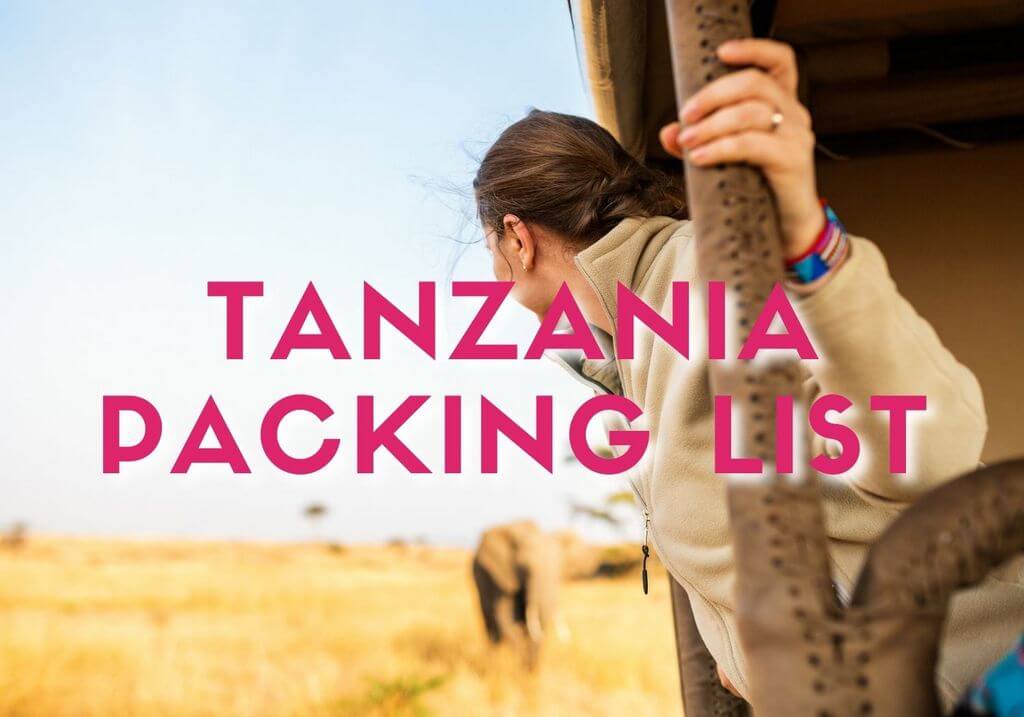Wondering what to pack for our trips to Tanzania?
In this article you will find an intro to the weather in Tanzania and a handy list of suggestions for things to bring.
Because we travel to Tanzania both in the high and shoulder season, this article gives tips for packing for trips to Tanzania in May, September and November.
To ship right to our packing list and tips, click here, otherwise keep reading for everything you’ll need to know about the weather in Tanzania!
Generally speaking, both November and May are transition and shoulder season months and that means there are fewer tourists and prices are much lower than during the peak season. With the season comes a change in weather, from the dry months to the rainy season, so we see quick, short and passing storms which are a sight to behold against the African savannah.
See our Amazon Tanzania summer packing list with all the product recommendations mentioned here.
This makes for dramatic photographs (imagine the thunder and clouds against the dry trees) and for opportunities to see wildlife welcoming the rain after the dry months (in November).
September is in the middle of the winter season and the weather is much drier, cooler at nights but hot during the day, and can be quite dusty as rain is scarce and has not been experienced in a few months.
The weather in Tanzania in November
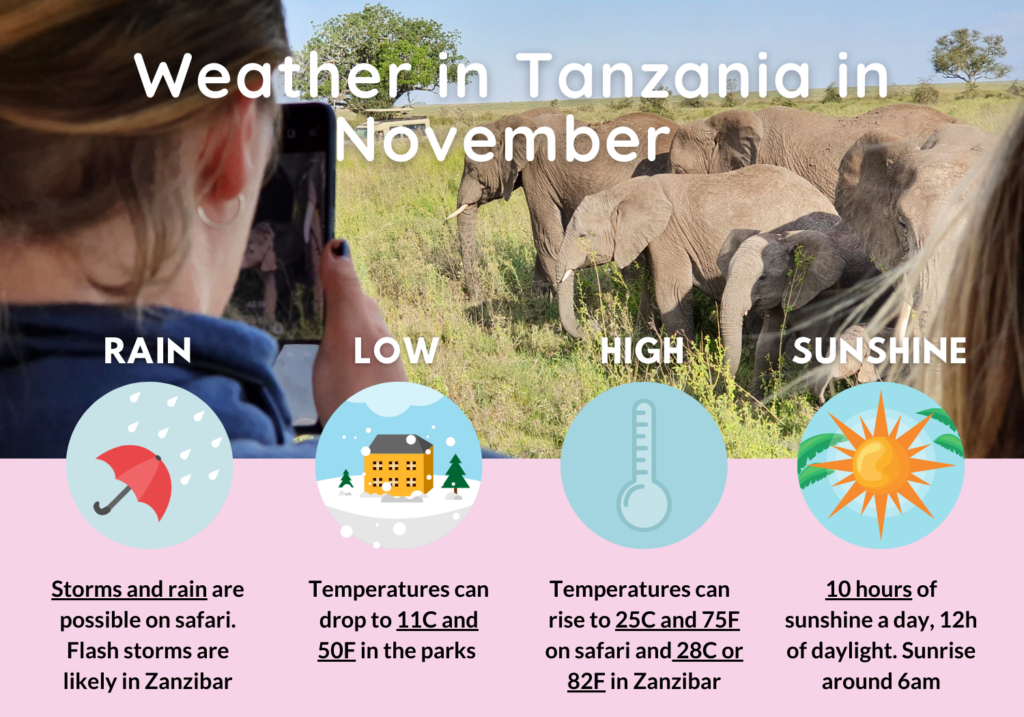
November is the beginning of the low season and a great month to take advantage of more affordable prices because of the higher chance of rain. This is why our Luxury Tanzania safari + Zanzibar trip is scheduled for the first week of November every year.
In the Ngorongoro Crater and Serengeti National Park areas, temperatures are slowly increasing to 25C or 77F during the day but remain chilly at night (dropping to 11C or 55F), and there is a relatively low chance of rain.
After months of dry weather, the wildlife is looking forward to the “short rains”, or tropical storms, and will enjoy them as much as we will; there is nothing as incredible as the cloud formations against the endless savannah.
Zanzibar is quieter and has entered the low season. That means fewer tourist crowds and emptier beaches. Rains are to be expected, but will be short passing storms that make for dramatic photos; if you’ve never seen a tropical storm, you will be amazed!
Temperatures in tropical Zanzibar stay warm between 24C and 28C (75F to 82F). Despite the occasional rains, the hours of sunlight remain high at around 10h a day and the days are long (12h) with sunrise happening around 6am.
The weather in Tanzania in May
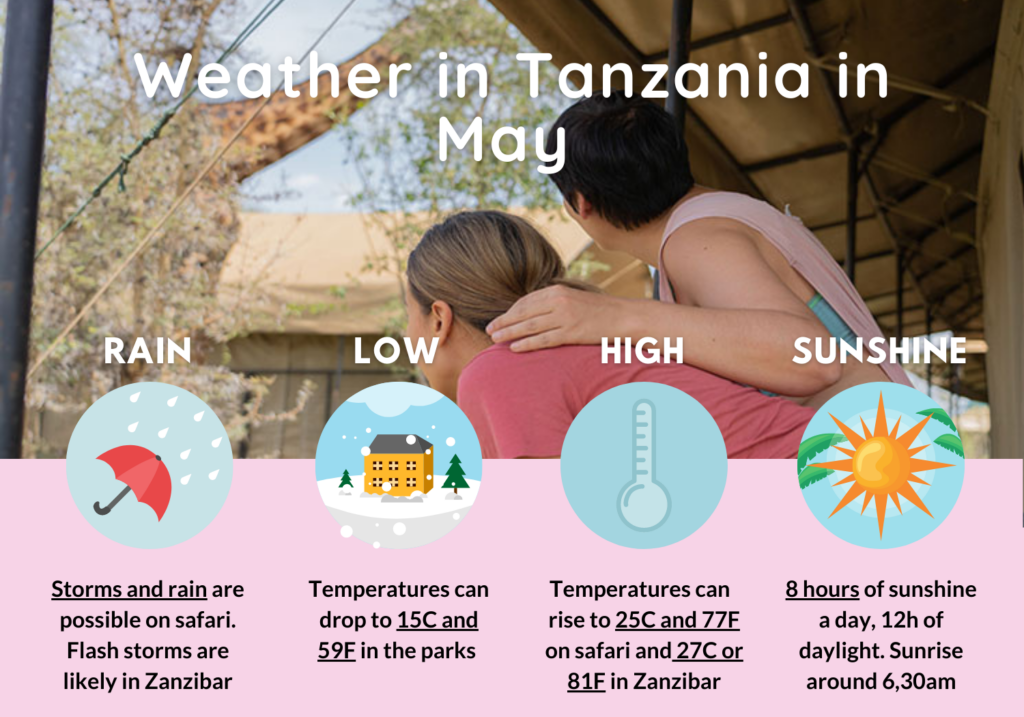
The weather in May is similar to that of November as it is the last shoulder month before the beginning of the peak summer season.
In the Ngorongoro Crater and Serengeti National Park areas, temperatures remain chilly at night but are a bit warmer than in November (dropping to 15C or 59F) and rise to 25C or 77F during the day. Rains are likely but typically quick and passing.
After months of wet weather, everything is green and lush and vegetation is high. The calves that were born during the January and February season are now older but still incredibly cute, and prolific wildlife fills the parks.
Zanzibar is still quiet, with fewer tourists, no crowds and emptier beaches. Rains are to be expected, but it never rains for the whole day, and if you’ve never seen a tropical storm, you will be amazed!
Temperatures stay warm but are more bearable than in the peak summer months hovering around 24C and 27C (75F to 81F). Despite the occasional rains, the hours of sunlight remain high at around 7h a day and the days are long (12h) with sunrise happening around 6.30am.
The weather in Tanzania from June to September
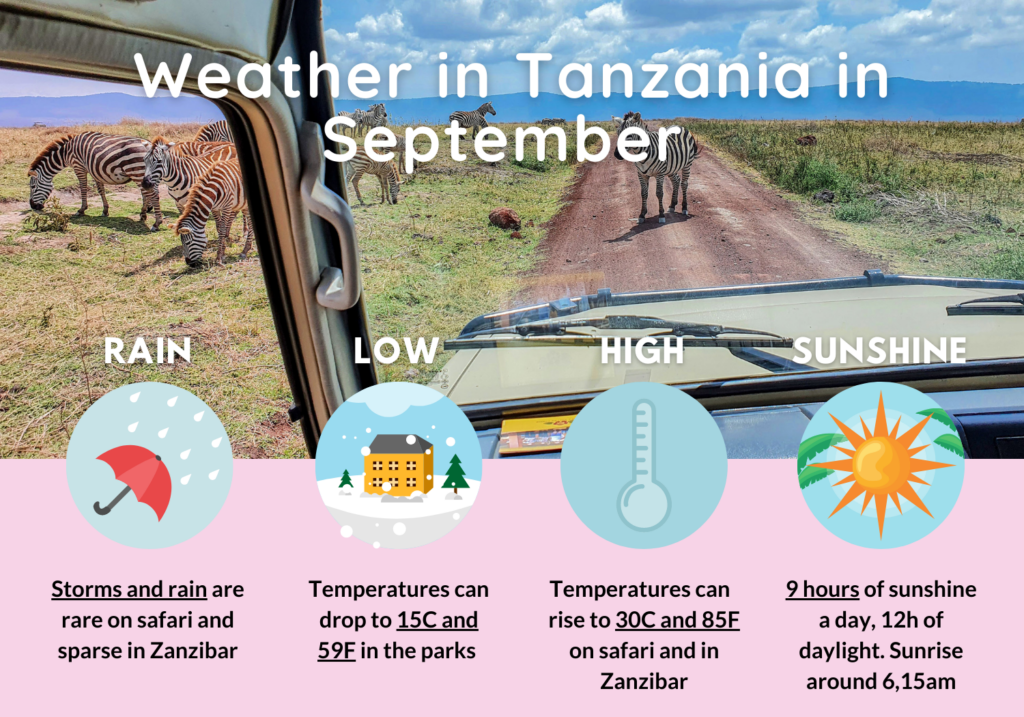
June and September are considered the peak season in Tanzania. They are dry months with a high chance of seeing the Great Migration, but are less busy than July and August, so there are fewer crowds. Nobody wants to be looking at a lion family with another 50 cars!
The vegetation is quite dry in September, after 3 months of minimal rains, but still lush in June, which is the beginning of the dry season, and this means lots of opportunities to spot wildlife among the dried out savannah, but also dust.
Zanzibar is also less busy than in the northern hemisphere summer months when Europeans flock to its beaches.
Temperatures are cool during the night, and pleasant during the day between 25C and 30C (77F to 85F). Days are long (12h) and sunny (8.5h of sunshine) with sunrise happening around 6.15am.
A typical day on safari
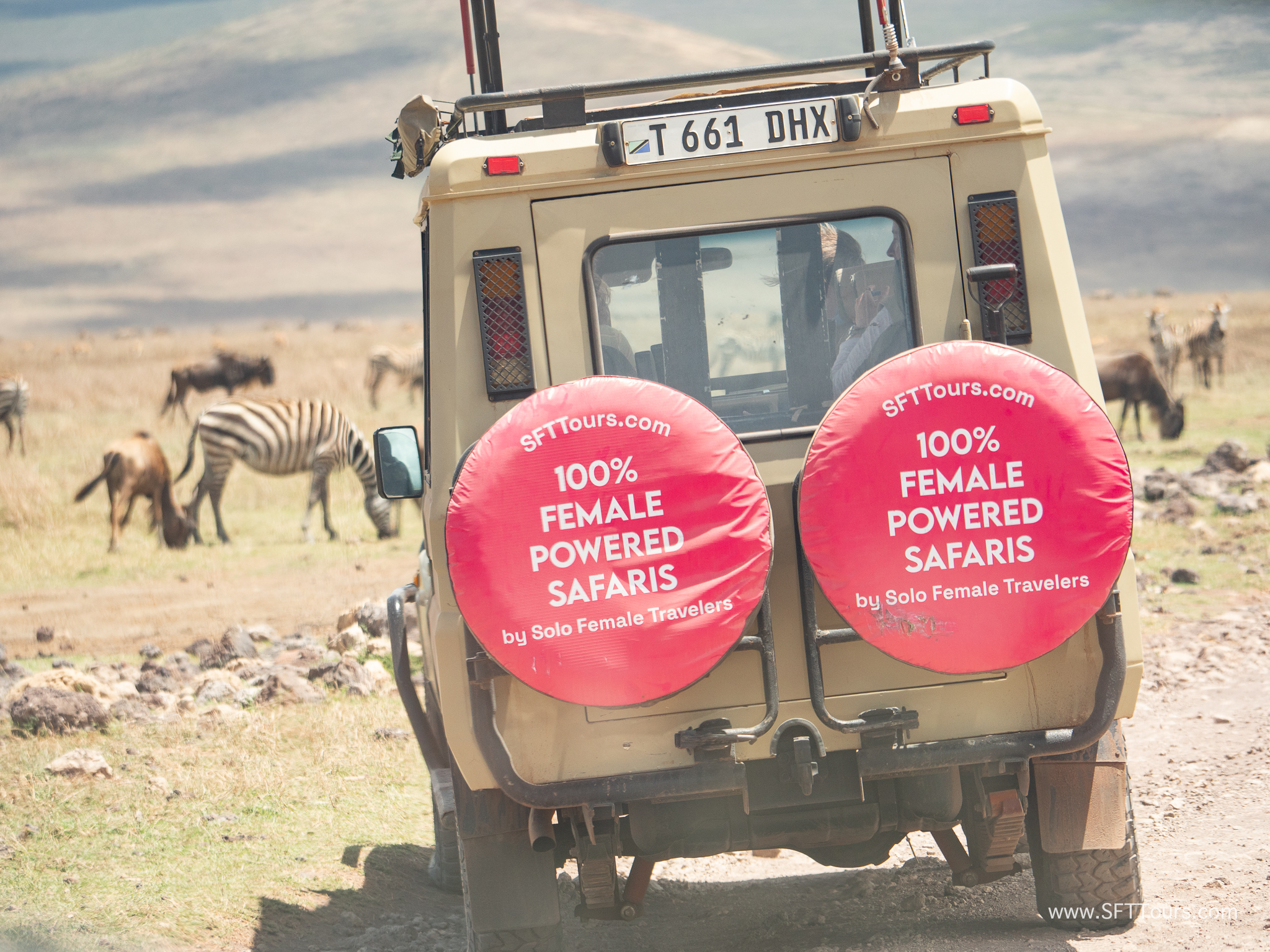
No matter where you go on safari, you will typically wake up early around sunrise, with a freshly brewed cup of local coffee / tea followed by a game drive and a full breakfast later on. Sometimes though, you might do a full breakfast followed by a full day game drive (with a picnic lunch) or an early morning game drive with a full lodge lunch.
If you went out for a morning game drive, lunch time (which is the hottest time of the day) is usually spent back at the lodge, reading, relaxing, enjoying a nap, chilling by the pool or chatting with fellow travelers. Wildlife is hard to spot in the heat of the day and that is why we take a break from game drives as they do.
In the late afternoon, you would head back out on our 4WD to enjoy the sunset in the bush, perhaps with a sundowner, before returning back to the lodge for a shower and pre-dinner drink by the camp fire.
If you are our on game drives all day, you will get a packed picnic lunch and stop in the park to enjoy it, usually at the designated picnic areas which are protected from the wildlife.
While on game drives, you will share an open-top 4WD car with other guests. That means the sun rays come through from the top and from the sides. In case of rain, the car top comes down, the windows are closed, and we can still watch wildlife through the glass.
When you leave the lodge in the early morning, the temperature will be pretty chilly, while in the heat of the day, it can be very hot.
Because of the change in temperatures during the day, you should pack in layers, and I recommend wearing long sleeves to protect yourself from insects (aka mosquitoes and tse tse flies) and from the sun, which shines horizontally in the early and late hours of the day and will come through the 4WD sides.
When at the lodge, casual is the name of the game and you should dress comfortably. You don’t need to dress up at night and closed toe shoes are usually best to fend off mosquitoes.
In Zanzibar’s resorts, light flowing dresses and beach wear is most appropriate, as we will be spending most of the time by the pool or beach.
In Stone Town, it is recommended to cover shoulders and knees as a sign of respect for the locals who are largely Muslim and traditionally more conservative than in the mainland.
Packing tips for Tanzania
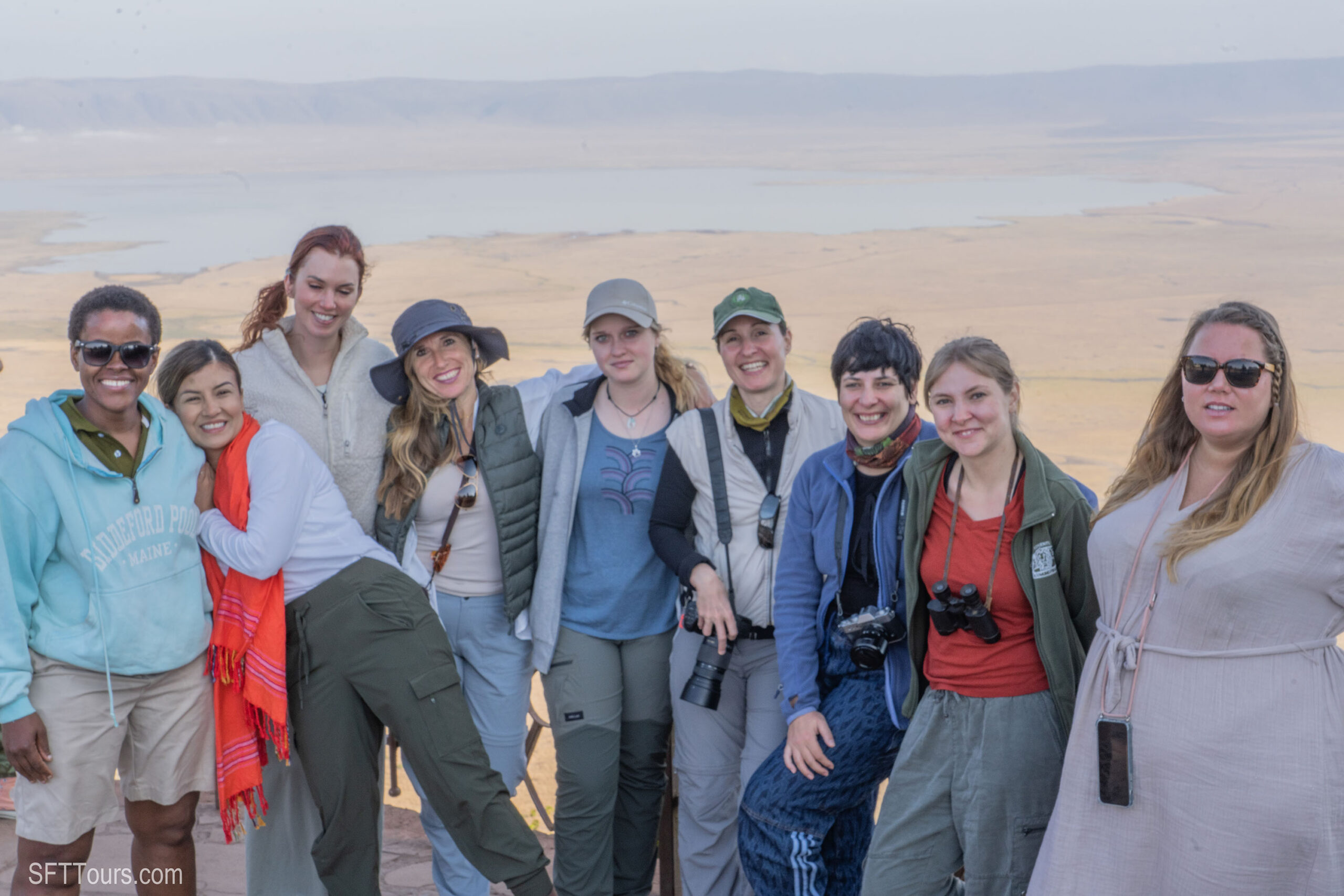
Before we delve into our Tanzania packing list in detail and look at all the items we recommend bringing, we want to provide some general Tanzania packing tips to bear in mind.
View all of our item suggestions in one place on our Amazon storefront here.
Pack light and soft
We can’t stress this enough. The aircraft we will use from the Serengeti to Zanzibar is a small propeller plane and there is a weight limitation.
Both guests and luggage need to be weighted to stabilise the plane and carry enough fuel. You are allowed no more than 20kg as luggage (including hand and check in luggage) and ideally, in a soft duffel bag that can be easily fit inside a plane, as opposed to a hard case that is hard to stack.
Grab an electronic hand luggage scale which you clip onto the handle of your bag and simply pull upward to reveal the weight to make sure your bags are never overweight again!
Overpacking puts the pilot in a difficult situation and on a full flight, it may mean your luggage gets brought in on a later flight. Paying for extra weight is possible but dependent on how full the flight is.
Lodges offer laundry service for a nominal fee or complimentary at luxury lodges and you can get your clothes washed, dried and folded overnight, use this service and bring only what you need.
Note: The staff do not wash underwear but can provide detergent for you to do so yourself. We recommend using a wheeled duffel bag so you can more easily carry it around and check the weight of the bag empty, some of these can be really heavy and eat into your allowance. Below some options.
Layer up
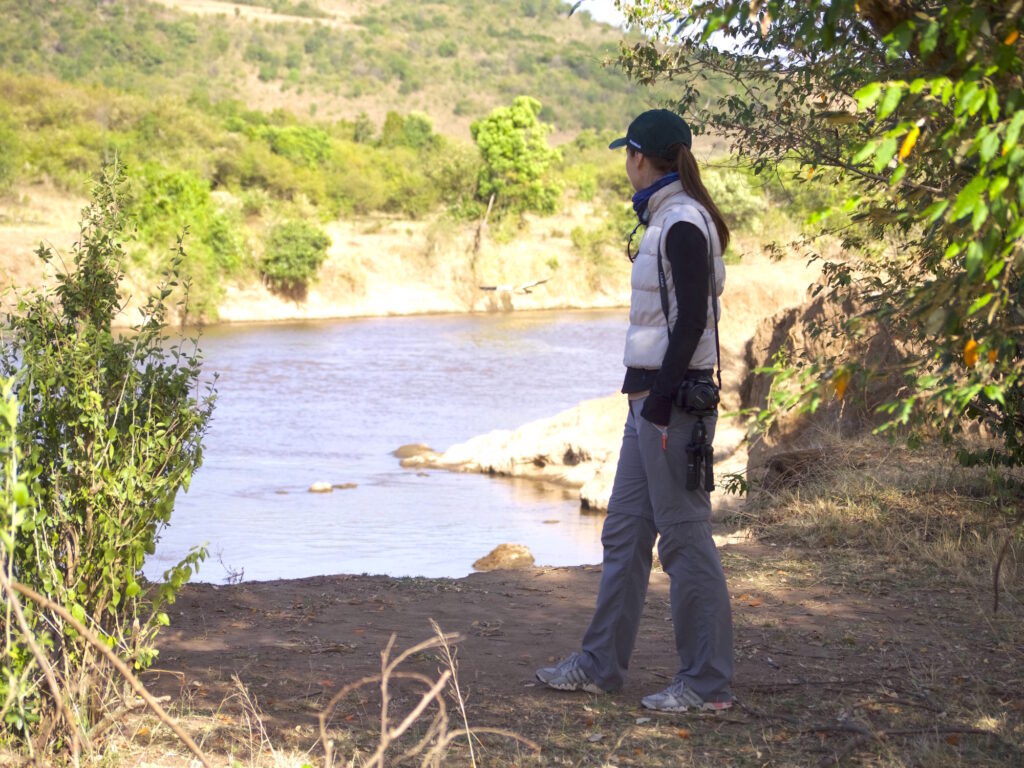
The best way to pack for the days on safari is by wearing a few layers of comfortable clothing including short sleeve tshirts, and long sleeve shirts with a collar and a light fleece jacket; even better if it is windproof.
Since early morning game drives will be chilly, you can dress warmer as we depart from the lodge and remove layers as the day progresses and the temperatures rise, only to put them back on when the sun sets.
Collars are key to keep your neck from sunburn. It’s normal for the weather to increase / decrease by 10C in just a couple of hours so you might get into the car wearing long sleeves, jacket and scarf only to return in a tshirt. Most visitors to Tanzania get caught by surprise by the change in temperatures during the day.
There is no *real* dress code on safari
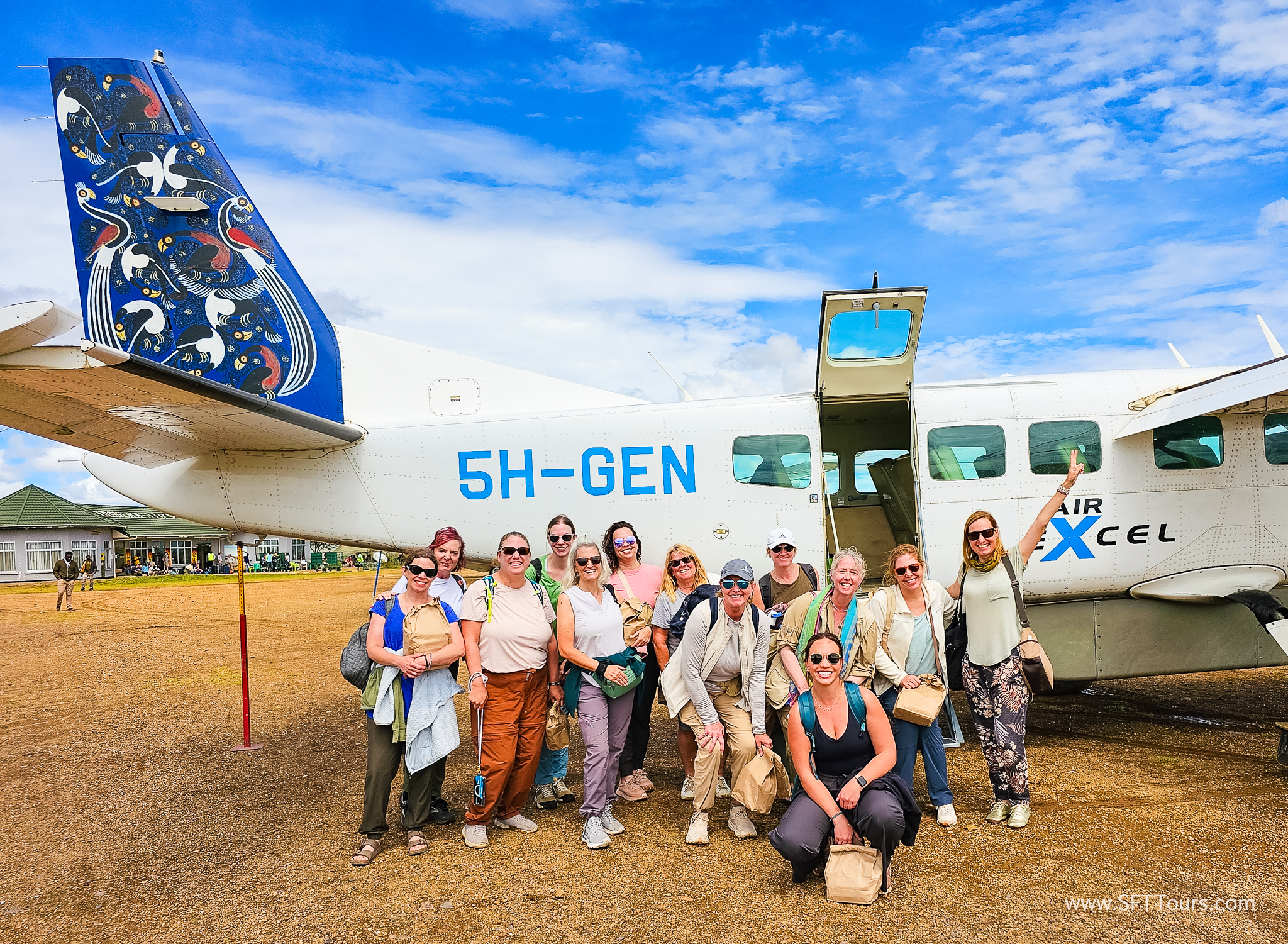
You can pretty much wear anything so there is no need to purchase new clothing. However, a suitable and comfortable outfit is made of three layers: a tank top or short sleeves tshirt, a long sleeve shirt that you can roll up or a thin hoodie tshirt and a zip-up jacket.
This is what I always wear in the bush and is a practical combo to stay warm and protected. I then throw on a light scarf for the early mornings and evenings, which can also be useful to cover the side of our faces in case the sun is shinning right on our cheeks while on game drives, and I have the perfect outfit.
Comfort should trump style and fancy clothes should be left at home as they’ll be ruined by the sun, repellent, dust combination.
Cover up
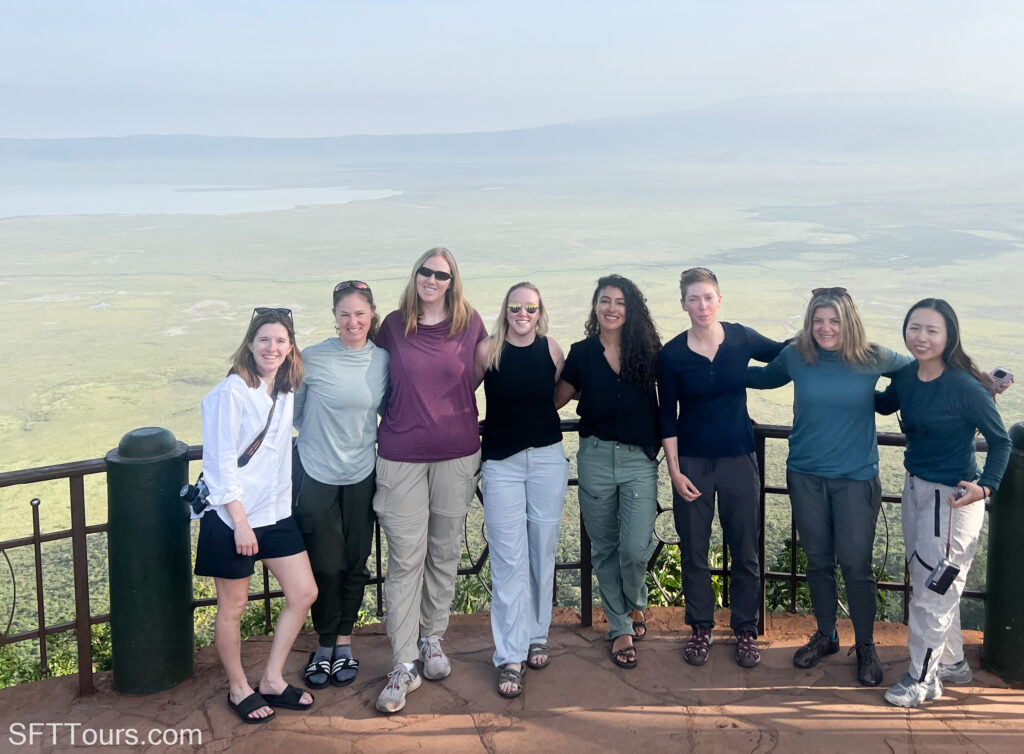
I recommend wearing long sleeves and long trousers to protect from both the sun and the insects, in particular mosquitoes and tse tse flies whose bites can be extremely painful and go through layers of clothing and even shoes and socks.
This is particularly important because you will be in areas where malaria is endemic. Fabrics that protect from the sun (offer SPF protection) are useful since the sun rays are extra strong on the Equator. This way you don’t have to put on any sunscreen.
Go natural and easy
Quick dry materials, especially those that repels water, are best for clothing in case of rain showers or if you want to do your own laundry. This is useful though not essential. I find that natural fibers such as cotton, denim or linen, are good but will end up quite creased or take long to dry.
Most outdoor or safari clothing is made of quick dry, breathable, light material that is especially useful for being in an open top car all day and doing laundry in the bush.
Blend in
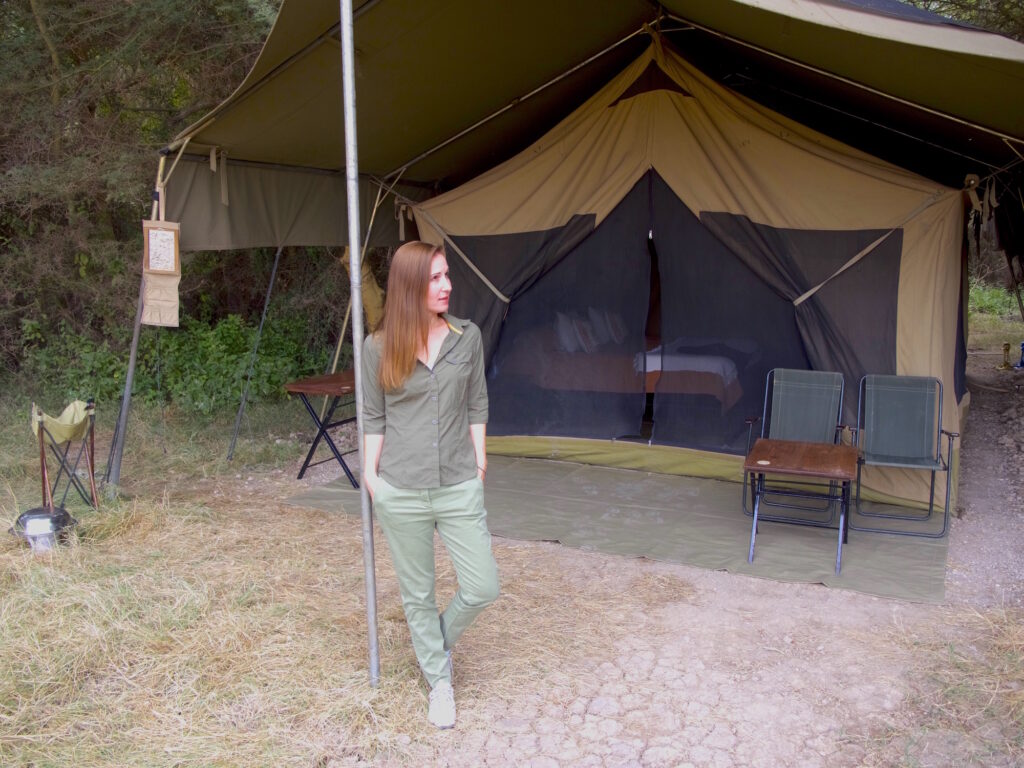
I prefer neutral colors which hide the dust and mud and blend in with the surroundings. Avoid the color black, because it attracts mosquitoes. The more you can camouflage, the better, but it is not necessary, you truly can wear whatever you want.
Be sustainable and environmentally conscious
You will most likely stay in non-permanent lodges in the middle of conservation areas and national parks, and these are fragile eco-systems that need our protection.
They are not connected to the electricity grid or to urban centers where waste disposal is handled, so please help out by being extra conscious and avoiding single use plastic, favor chemical-free products and toiletries and be mindful of wasting water when you brush your teeth or take a shower.
Seal things off
Dust gets everywhere while on safari, and I mean it. You’ll be in an open top vehicle for several hours a day and the dust of the bush will get into your bag, your camera lenses, your sunglasses, etc.
I recommend packing dusting cloths for items that may need cleaning (glasses, lenses) and bringing a bag that can be zipped closed for valuables that could be damaged by dust and keeping them zipped inside while on safari.
Important: Tanzania banned plastic bags in 2019. That means that it is forbidden to bring any plastic bags in, including those you may use to go through airports and put your toiletries in, so leave them at home and don’t pack any, or make sure they are resealable.
What to wear on safari in Tanzania
Below is a photo from our previous women-only safari so you can see what our guests wore and take some inspiration.
As you can see, most guests wear long sleeves, natural colors, and comfy shoes. However, you can wear a pair of jeans or yoga pants and a simple tshirt and you will be perfectly fine to sit in a bumpy car for 8 hours a day under the sun, dust and wind.
Your tops on safari
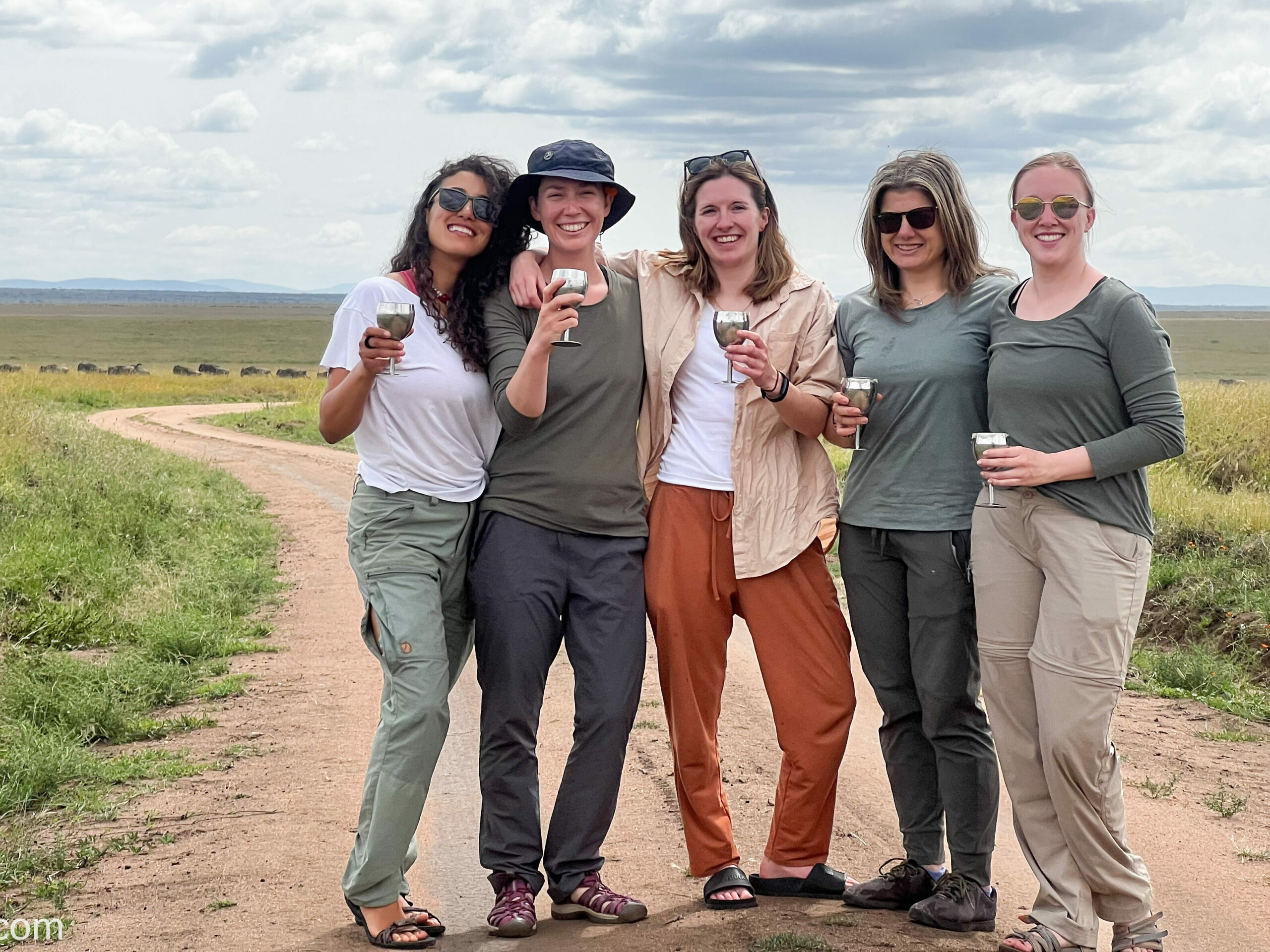
As mentioned, we recommend layering up with 3 pieces of clothing: a base layer made of a tank top, a long sleeve shirt or tshirt, and an outer layer light jacket. Remember that most of your day will be spent either in a 4WD open top car or the lodge.
We recommend having 2 or maximum 3 items of clothing for each safari layer and getting them washed at the lodge, plus an additional evening outfit you can wear around the lodge. This should ensure you always have clean clothes to wear and minimize packing.
2-3 x base layer tshirts or tank top
Your base layer is the one closest to your skin and should be comfortable and soft. Bring more of these and fewer of the top layers so you always have fresh base layers even if your top layers get dirty.
Any tshirt or tank top will do, but we particularly love those from Uniqlo. Sports tops are also a good idea. If you are worried about perspiration, it’s good to bring short sleeves.
2-3 x top layer shirts or long sleeve tshirts
This is the most important layer because it is the one you will be wearing most of the day and it is the one which will protect you from the sun and insects. If you splurge on any piece of clothing for this trip, I would suggest you do so on this top layer.
I prefer to wear collared safari-style long sleeved shirts for this layer because they protect my neck from the sun and I can roll the sleeves up if it becomes too hot. They are also loose and will keep me cool when the sun is beating, and I can unbutton them when it gets really hot. They are also quick to wash and dry.
Outdoor brands like Columbia, The North Face and Patagonia have specifically designed non-crease, quick dry, cooling shirts that are light and just what you need.
If you don’t like to wear shirts, long sleeve, SPF, hoodie tshirts are also a good idea. Bonus points for the ones which cover all the way to the back of your hand and maximize your protection from the sun; I wear these in Singapore when I go out running or cycling.
If you prefer not to buy clothing you won’t wear back at home, any long sleeve blouse or tshirt will do, but avoid those in black, which will attract mosquitoes, or in white which will end up pretty dirty from the dust.
2 x outer layer fleece jackets
You should bring a light fleece jacket to wear in the early morning and late evenings when temperatures really do drop.
I like this loose fitting, fluffy and furry, zip up fleece jacket from Colombia that also keeps my lower back warm when sitting down in the fold up safari chairs by the camp fire.
Zip-up jackets are easier to open when the weather gets hot and many of them come with interior pockets that come in handy to carry lip balm, sunglasses, sun screen and to keep my camera lens cover when taking photographs.
I like the feeling of a soft fleece jacket instead of a proper structured jacket and it is also a much easier item to pack which can easily fit in your day pack or in your luggage, plus it can be the same jacket you wear in the plane, we all know how cold it gets in some cabins!
Pro tip: Pick a jacket that has a collar so that your neck is protected form the sun. Even in the early hours when the sun is coming up, you can get sun burnt without noticing.
Trousers
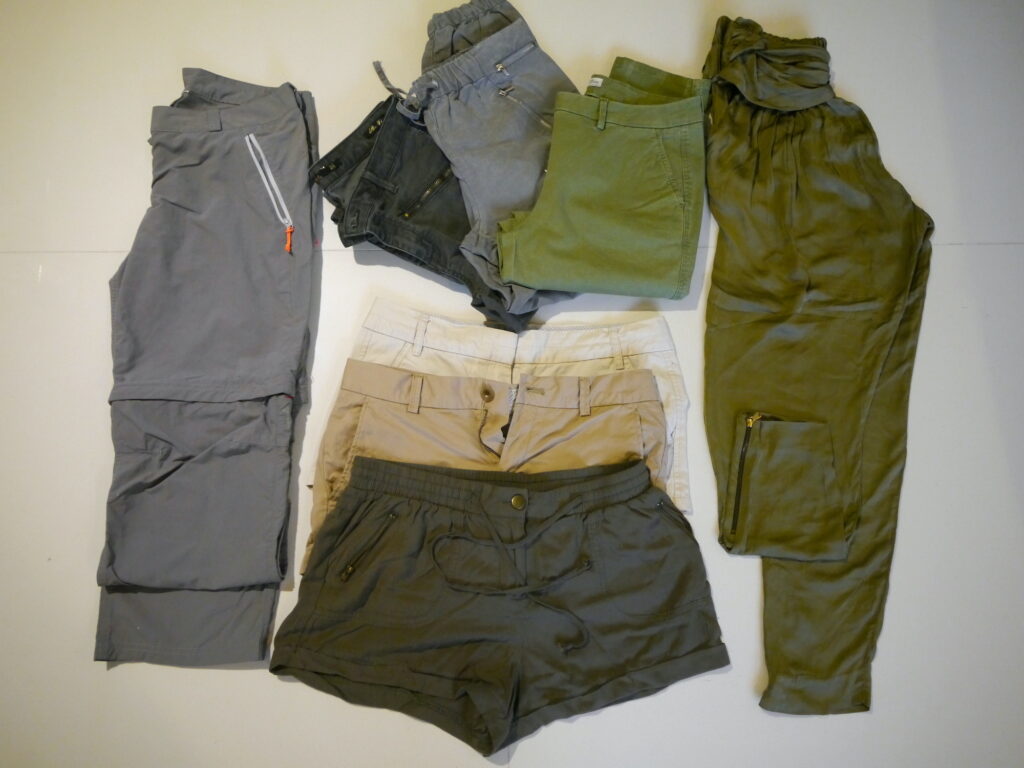
Besides your top layers and jackets, we recommend wearing long trousers on safari. Any kind of comfortable pair will work, but the zip up trousers that can be converted from long to short are a good idea because they will be useful to keep you warm in the morning and cool during the day.
As mentioned, you will be sitting in a 4WD car for a minimum of 4 to 6 hours every day, so it is important that you wear comfy pants. If you are comfortable in jeans, they can be a good idea, but the tough fabric can make sitting in a car for an extended period of time quite uncomfortable and they will take longer to dry after washing.
If you already have hiking pants at home, bring them over as they are always useful. Alternatively, yoga leggings with pockets like these, or ones from Lululemon, cargo / hiking pants or any joggers are fine, but remember to avoid black and bear in mind that, the thinner the material, the more likely it will be for mosquitoes and tse tse flies to bite through it, and trust me, they will!
In the above photo you see a lay-out of the trousers I packed on my last safari trip where we spent 10 days on a private mobile tented safari.
I brought one of the typical hiking pants that adjusts to shorts (on the left), three pairs of casual cargo / khaki trousers, one pair of silk trousers for the lodge, and 3 pairs of shorts that I wore around the lodge and in Zanzibar. I was there during the peak summer months when temperatures were hotter during the day but at night, they still dropped to chilly.
Other clothes to pack
If you are a buddying photographer, you will be carrying your own camera and lenses and several other accessories that you need to have handy in case the opportunity for the right shot presents itself. If that’s you, a pocketed utility vest like the ones used for fishing and hunting can be useful.
We also recommend packing a comfortable outfit for the evenings. After a warm shower, it’ll be nice to slip into clean crisp clothes. These will need to be washed less so two pairs of each bottom and top should suffice if you make use of the lodge’s laundry service.
We don’t usually recommend wearing shorts on safari for the reasons explained above, but while at the lodge, you may want to relax in a pair of shorts during the day or a skirt like I did.
Alternatively, a loose pair of trousers, a pair of capris pants or a long skirt can be equally comfortable, or even a maxi dress that you can also wear in Zanzibar.
Footwear
We strongly recommend wearing closed-toe, rubber sole shoes such as sneakers with socks so you don’t get bitten by insects (tse tse flies love biting your feet even through sneakers and socks) or end up covered in mud / dust and can easily walk to and from the car and around the lodge.
Contrary to what you may think, there is no need to wear heavy hiking boots or alike because there is no walking involved in the safaris we will be doing in the Serengeti and at Ngorongoro Crater. The safari outfits you see in movies are more for the historical big game hunters who did indeed cross through the jungles and savannah of foot, but we won’t be doing any of that.
Any closed toe comfortable rubber sole shoes that follow the principles of protection and layering will be best. If you have heavy duty hiking boots and want to bring them, we advise that you reconsider; they will be unnecessary, will they take up a lot of space and will eat up a lot of your weight allowance.
You may bring sandals or flip flops for the pool area at the lodges and a pair of casual shoes for when you are at the lodge if you wish to change into clean shoes after rain or mud (though the same shoes you wear on safari are perfectly fine at the lodge).
If you plan to go on a walking safari, you’ll need a pair of hiking boots. We love Timberland and Columbia as they are great outdoor brands and their products just last forever. I have a pair of 12 year old Timberland hiking boots I always bring on safari and the brand has been making the same model for at least 2 decades.
Like with clothing, you’ll be better off avoiding black colored shoes, mosquitoes and tse tse flies love bitting your feet and it is not pretty to end up with 20 bites.
Other accessories you need on safari
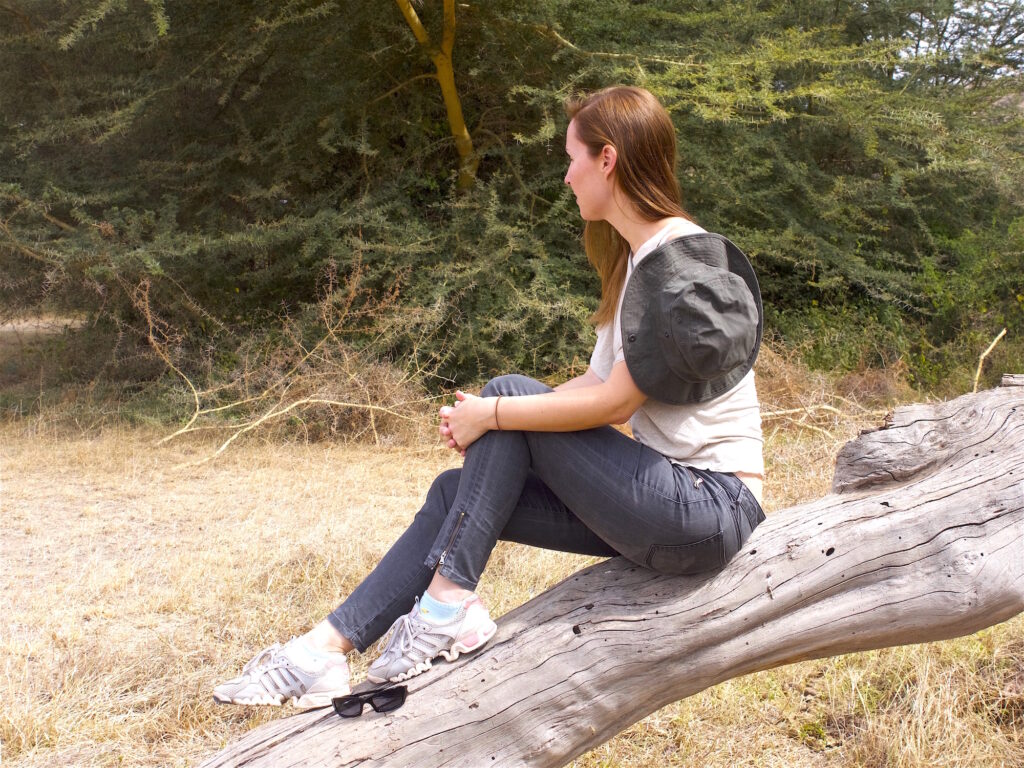
Your outfits should be complemented with some basic items:
- A hat: It is better to wear a floppy hat that you can tie under your chin and does not fly away when you are driving and standing up in the wind. A wide brim is useful to protect from the sun, but you could also wear a cap.
- A pair of sunglasses: This is a must not only for the sun but also for th dust that is everywhere when you are driving in a safari car in the dry season. I strongly recommend you wear one of the technical glasses and not a designer one, so they cover your eyes properly and provide protection on the sides.
- A buff: I always wear a buff on safari which I can use to cover my neck from the sun (which will come sideways at sunrise / sunset) and to put over my mouth and nose to keep the dust away.
What to wear in Zanzibar
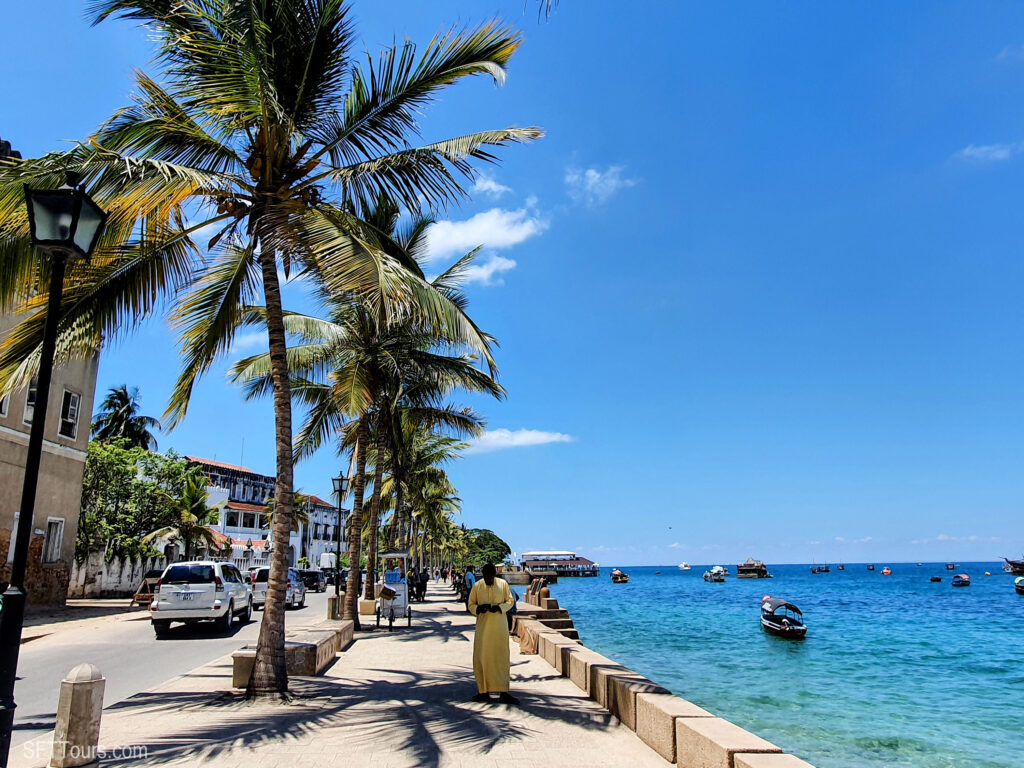
Zanzibar is all about beachwear at the resort and conservative, flowy and loose clothing in Stone Town, a primarily Muslim town.
While locals are used to visitors wearing shorts, we find it is more respectful to wear long bottoms and a tshirt, instead of a tank top. There is no need to cover your head or dress any more conservatively than this.
While at the beach resort, you are free to wear your bikini or swim suit, shorts, skirts, short dresses, cover ups and other beachwear as you would elsewhere. Resort pools are private areas but beaches in Tanzania are public, despite the stretch in front of each resort being primarily used by resort guests.
Resorts provide towels so you don’t have to pack that, but a sarong is always a good idea and can come in pretty handy in various situations, from going down to the pool or beach from your room to getting up from your lounger to order food or drinks. I always have one handy whenever we are traveling to the beach.
In terms of footwear, a pair of flip flops or sandals will come in handy, both at the resort as well as when touring Stone Town. We like Havaianas slim flip flops.
If you plan to book any additional water sports such as windsurfing or snorkelling, you may want to pack an SPF rash guard or rash guard swim suit which will not only protect you from the sun but also keep you safe from scratches from corals or surf boards. I always have a couple of them from O’Neill and Roxy handy.
Don’t forget to bring a tote bag that you can use to go down to the resort pool or beach (that won’t get sand in it) and a straw hat to protect from the sun. You can of course also use your safari hat.
If you plan to book any water sports, you may want to consider bringing a waterproof dry bag. They can hold your sunscreen, your room key and even your phone if you are, for example, going kayaking.
Other items you should pack for Tanzania
Besides packing the right clothes, there are a few others items you should include in your Tanzania packing list, below we list a few handy ones:
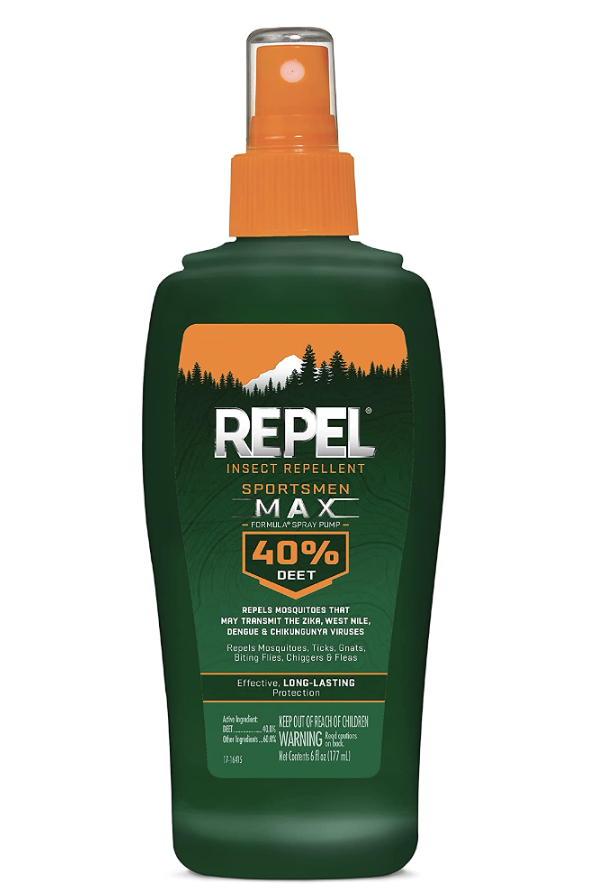 | Repellent, repellent, repellent: By now you probably realized that mosquitoes and insects are a fact of life in the bush and in Zanzibar. While we strongly recommend you take Malaria tablets as a precaution (and you should get the proper medical advice on this) and get the necessary vaccinations (Yellow Fever, Typhoid Fever, etc.), the best way to protect yourself from nasty bites is by spraying repellent. Everyone has their favorites, from the natural repellents that use citronella and other ingredient to the DEET-based repellents. When I worked across East Africa for 5 years and was not able to take Malaria tablets on a daily basis, I always wore long sleeves, long trousers and high socks, then generously sprayed repellent with a high DEET concentration (minimum 30%). I find that, unfortunately, natural repellents just don’t work in the bush and DEET is essential. However, everyone is different and what works for someone may not work for someone else. If you decide to use DEET-based repellent, beware that it is a toxic chemical and you should apply it in an airy place and wash your hands thoroughly to avoid having an upset stomach (from then touching your mouth). If you buy repellents with a high concentration of DEET (eg. over 50%) beware that their chemicals may melt plastic, including the bag which you may store them in or your sneakers (yep, true story)! I prefer to spray repellent on my clothes instead of on my skin. In the lodges, mosquito nets are often placed over the beds at night and tented camps have mesh windows. I have relied on the brands Repel and OFF at home in Singapore and in the bush and tropical jungles for years, they just work. |
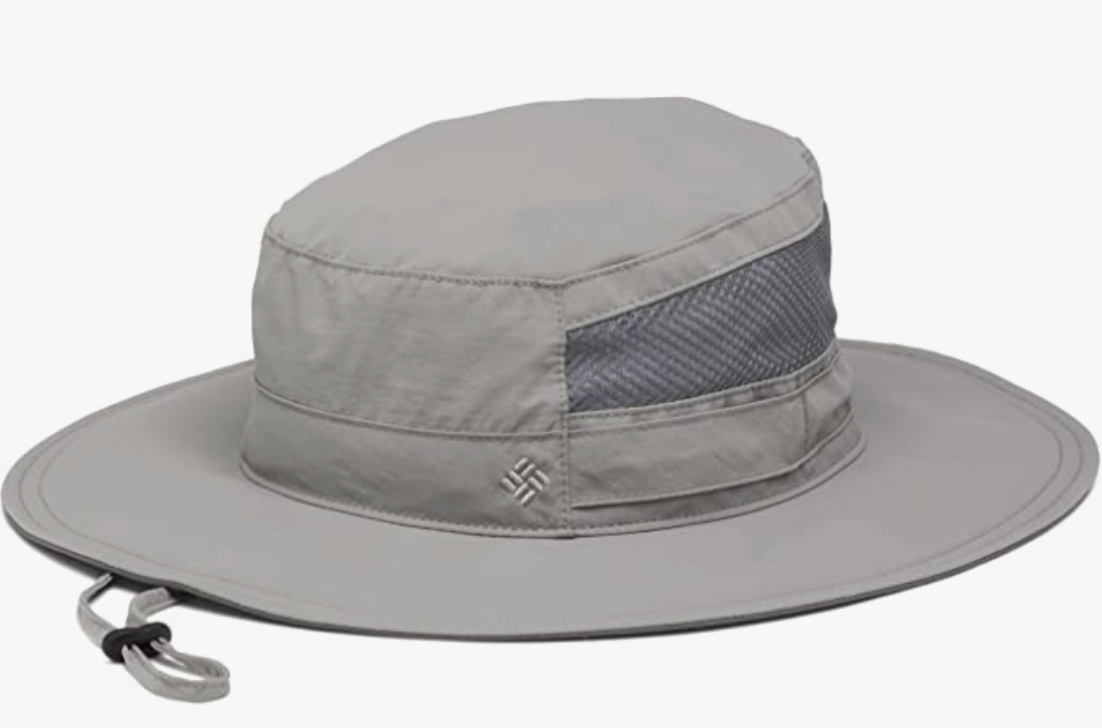 | Hat: On safari, a floppy sun hat is a very useful item to pack and better than a wide brimmed straw hat that is not only harder to pack (especially in a soft bag) but also unpractical in the confined spaces of a car. I recommend you bring one which comes with adjustable chin cords that keeps it from flying away when we are driving, has foldable flaps and is wide brimmed for extra sun protection. Columbia makes breathable hats that are a winner. Alternatively, a cap will also help you protect from the sun, but since the sun rays come sideways, you will need to layer on the sunscreen or use a scarf. A Panama hat is a good middle ground option too (but make sure it has a chin strap), but harder to pack. |
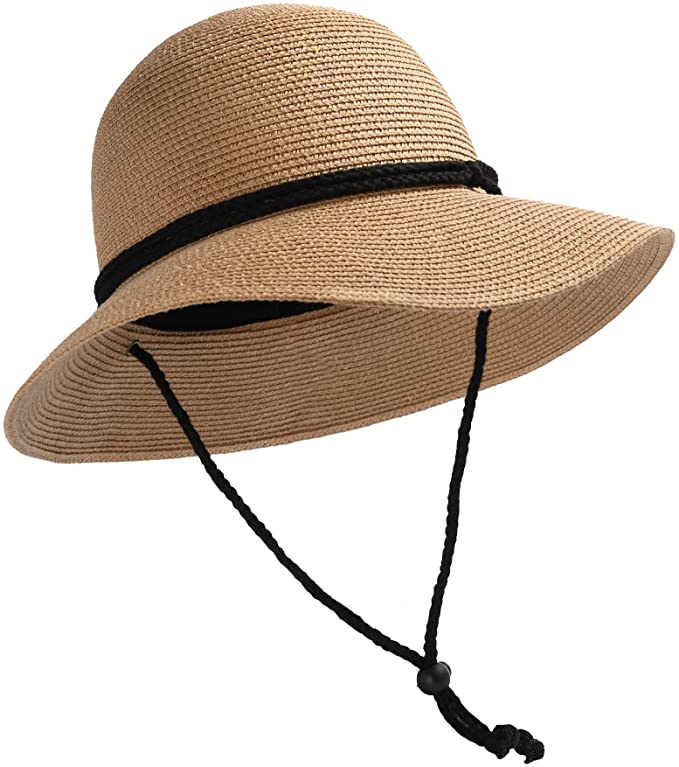 | A sun hat: A sun hat is useful at the beach and when in Stone Town, the sun is very strong and I don’t recommend spending hours in it without a hat. Check out this wide brim one. |
 | High socks: You guessed it, socks are important to protect from insects. I like the relatively thick ones like these, especially if you are wearing boots, so you avoid blisters and add a layer against tse tse flies. |
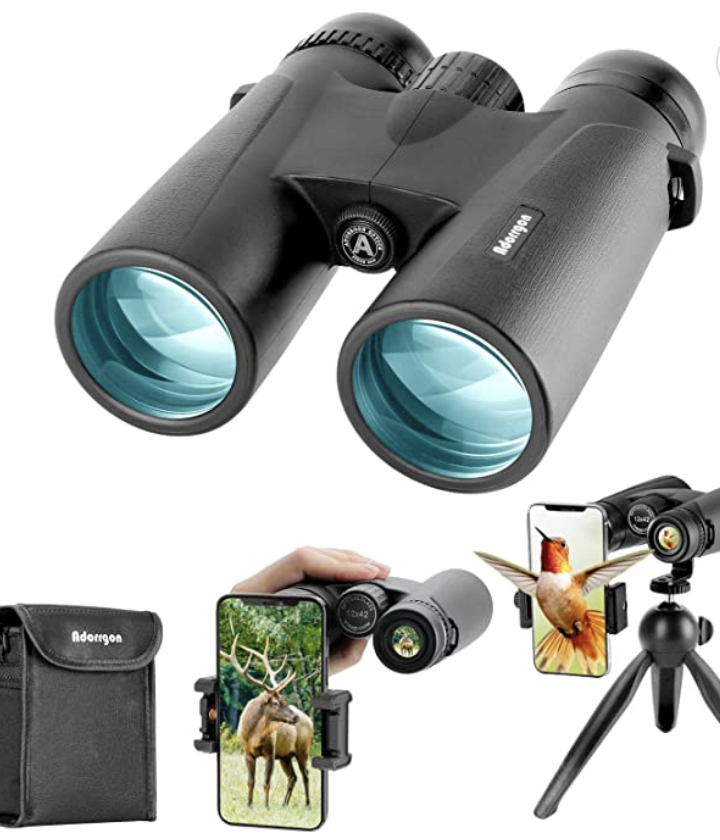 | Binoculars: If you are an avid wildlife lover, you may want to pack a pair of compact binoculars. Safari guides always have their own pair you can borrow but if you don’t want to share, you can consider bringing your own. Unless you have a long lens camera, the binoculars are going to be a great way to observe animals from closer so I highly recommend to bring a pair. These ones can be attached to your phone so you can take photos as if you had a long lens. Saves you having to buy a very expensive camera + lens running in the thousands. |
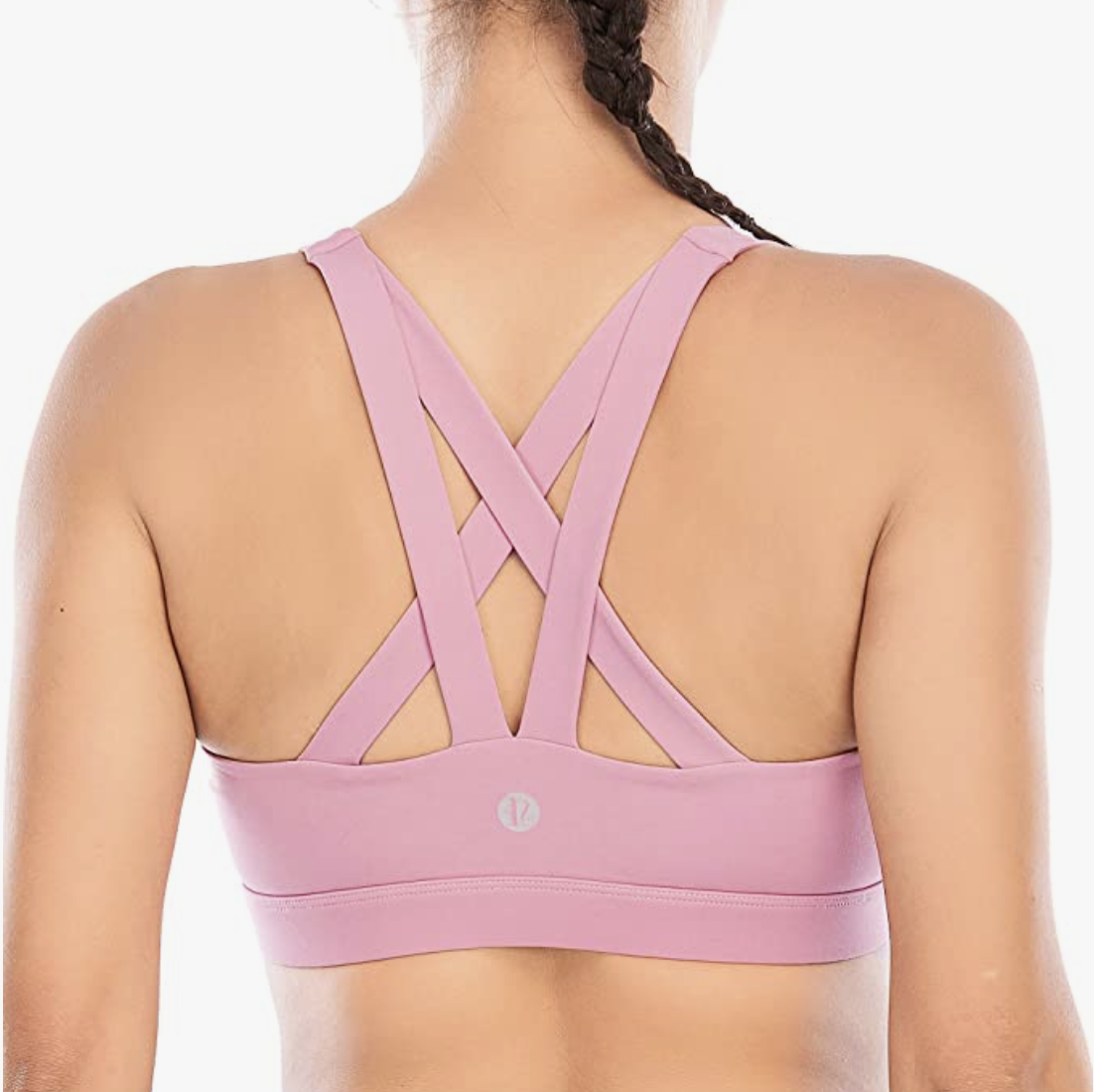 | Sports bras: We will be spending several hours in a 4WD driving across bumpy, unpaved and possibly potholed park roads. Many women find that sports bras, especially those designed for running like these ones, help and are better than wire bras. |
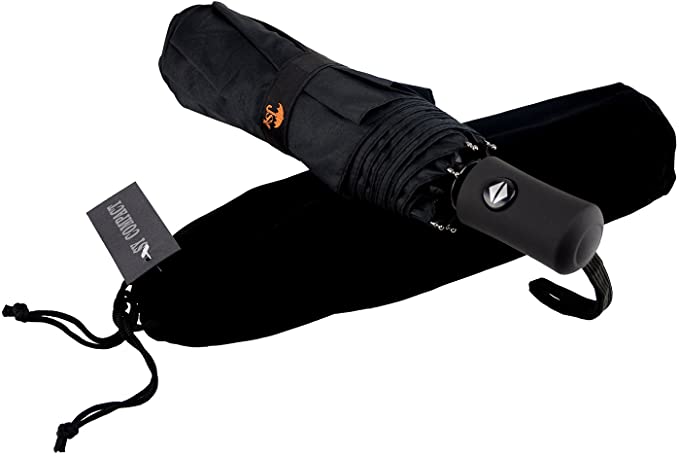 | A travel umbrella: You will only need / use an umbrella in Zanzibar so if you have no space, leave it at home. This one weighs less than 500 grams and is wind-resistant. |
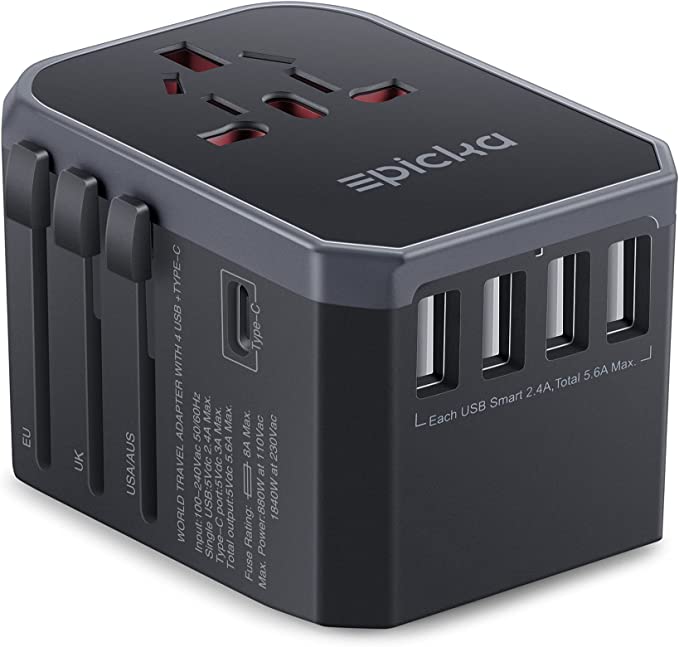 | Universal plug adaptor: Tanzania uses standard three flat prong UK plugs. I like the ones which come with USB ports so that we can charge phones, cameras and everything else with just one adaptor. I love this one because it has USB ports for all the electronics we now carry. |
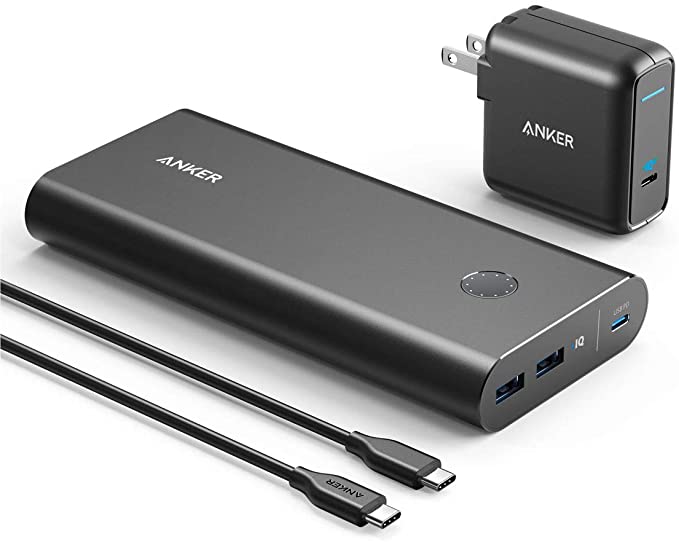 | Power bank: This Anker Portable Charger has a 20000mAh capacity, and fast-charging USB-C ports, you can power up your devices in a flash, while the LED display keeps you in the know about your battery level. It’s the perfect companion for a day out on safari when you will be using your phone a lot to take photos and videos and will use up that battery a lot. |
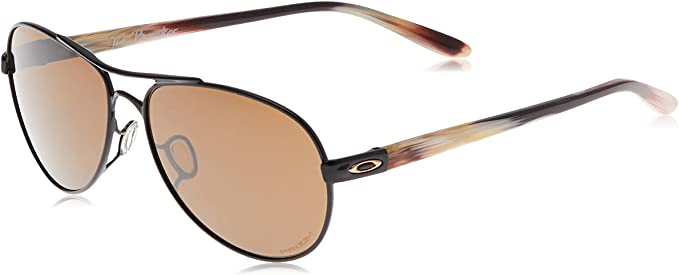 | Sunglasses: It is imperative to bring sunglasses especially for Zanzibar, but also for the safari since the sun shines low on the horizon and dust can get into your eyes. I like an use Oakley sunglasses for over 25 years as they are polarised and protect your eyes from any damaging sun rays and from the dust because they usually come quite close to the face. Make sure to pack a cloth to wipe and clean your glasses from dust, a constant battle on safari. |
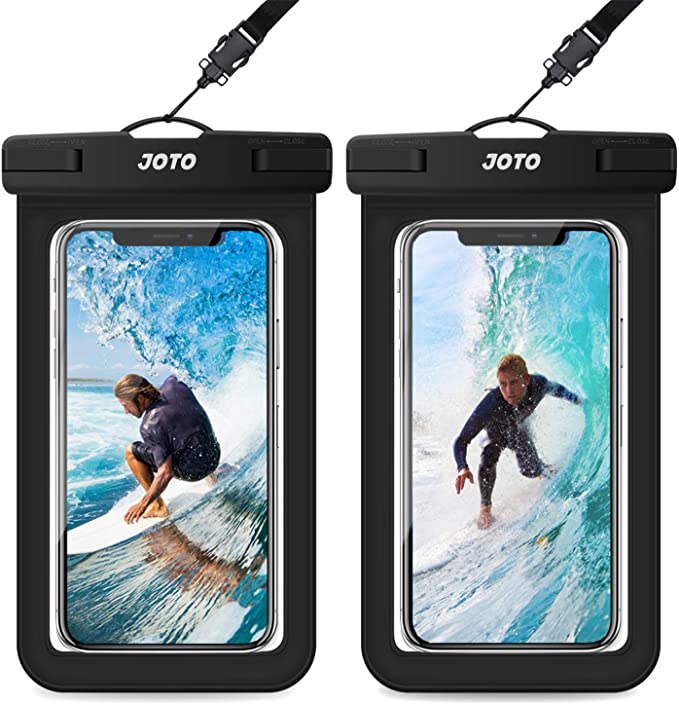 | Waterproof mobile phone case: This comes in handy to take with you in the water in case you go to the beach alone as you can stash other belongings like credit cards or money in it and make sure they are safely with you even if you go for a dip. This one is a commonly purchased one by our guests to Iceland who take it to the Blue Lagoon for pictures. |
 | Water bottle: Single use plastic bottles are terrible for the environment so we recommend you bring your own reusable bottle as part of our efforts towards zero-waste and responsible travel. When on safari, we will provide water from large containers for you to replenish your own bottle.. |
 | Sunscreen: One of the most important items in this packing list is sunscreen. The sun is very strong on the Equator and you will be under its powerful rays for many hours, protecting your skin is key. Applying sunscreen helps protect the skin from sunburn, premature aging, and reduces the risk of skin cancer, ensuring safe enjoyment of outdoor activities. I like and use Biore SPF 50++++ for my face because you can wear it under makeup and it is non-sticky and silky smooth. For the body, I highly recommend Aussie brand Sun Bum which is specifically designed for Australia’s super strong sun, is vegan, reef-safe and smells heavenly. They have a travel pack with sizes below 100ml that comes with a pretty pouch and includes sunscreen, lip balm (very important) and aftersun. |
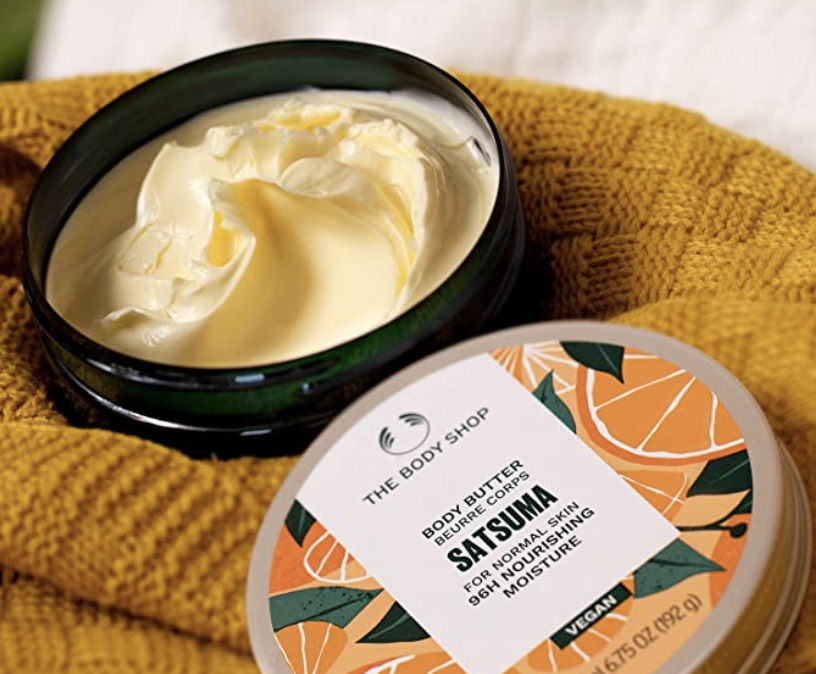 | Body lotion: The weather can be quite dry and dusty so a good body lotion is always a good idea. Plus it’s more environmentally friendly to bring your own in a small reusable bottle than to use the disposable toiletries given at lodges. Everyone has their favorites but you really do need hardcore hydration in the dry bush. My sister gifted me a Body Shop Christmas Advent calendar that came with many of their products to try and this 96h hydration body butter is amazing. It comes in a flat recycled plastic tub with an aluminium lid that’s super easy for travel and anti-spill (I can testify to that since I’ve traveled a few countries with it). |
 | Biodegradable tissue and wet wipes: It’s a good idea to have a small packet of biodegradable wet towels handy to wash face and hands from sweat and dust, after all, we will be in an open top car for a few hours everyday. These ones are specifically designed for outdoorsy people and for getting rid of dust and sweat. |
 | Flushable feminine wipes: Toilet stops in the bush may lack toilet paper or may me a bush toile (aka a quick wee behind a rock or tree). Flushable feminine wipes will come in handy. |
 | Lip balm: The sun makes it particularly tough for the skin and lips so you should bring a lip balm to stay moisturized. We find these are essential to not end up with completely ruined lips or even blisters. This Nivea one comes in a pack of 4 and has SPF, so your lips will never be dry again! |
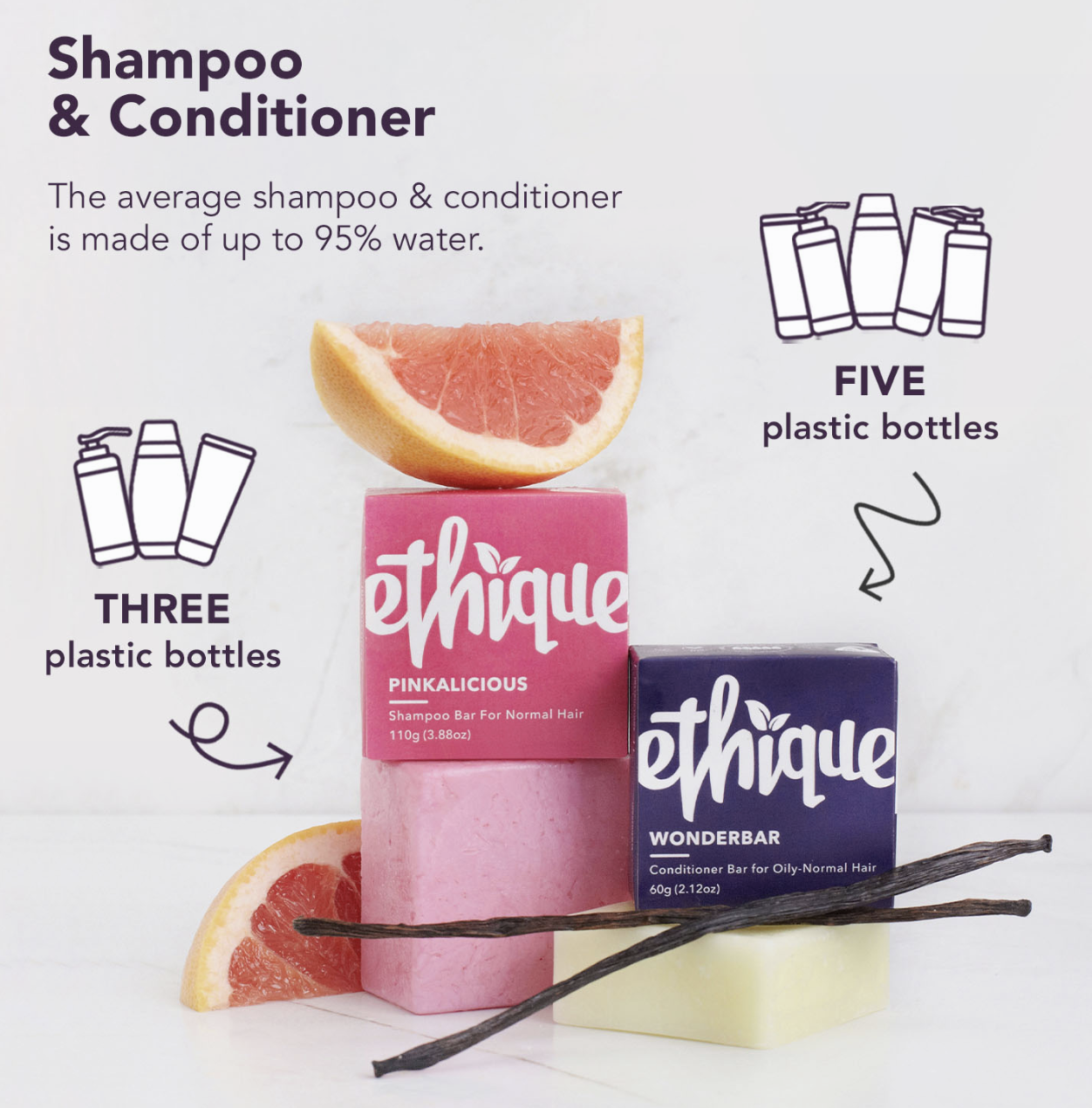 | Environmentally friendly toiletries: We will be spending a large amount of time in the bush, and we have hand picked lodges that are environmentally friendly low-impact structures. This means they process their own waste, so the more we can help them minimize chemicals in the water, the better. We highly recommend you bring toiletries that are low in chemicals. It is a good idea to pack chemical-free solid shampoo, conditioner, deodorants and shower bars instead of liquids to minimize space and environmental impact. I particularly like brands Ethique. They also sell samplers so you can try a few of their products and see if it is for you. Consider other sustainable products such as toothpaste bits or reusable cotton buds to minimize the wastage you leave behind. PS: Bring a ziplock bag to store the bars after use since you may not have time to wait for them to dry before having to pack and check out. |
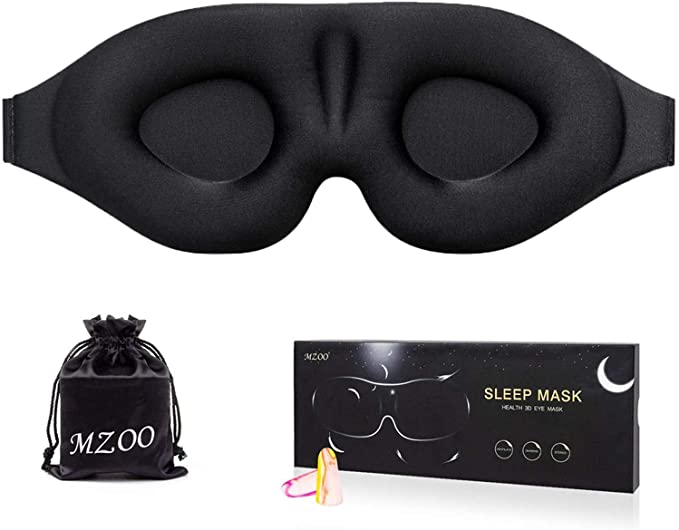 | Sleep mask: Although hotels have proper blinds, you will be sharing the room with another traveler who may be a late owl. Bring a sleep mask like this one to block the light. Or upgrade to Manta Sleep, I have been using the sound mask for months now and it is INCREDIBLE both for the flight as well as to sleep at night and get over the jetlag. It is magic when paired with my Calm app. |
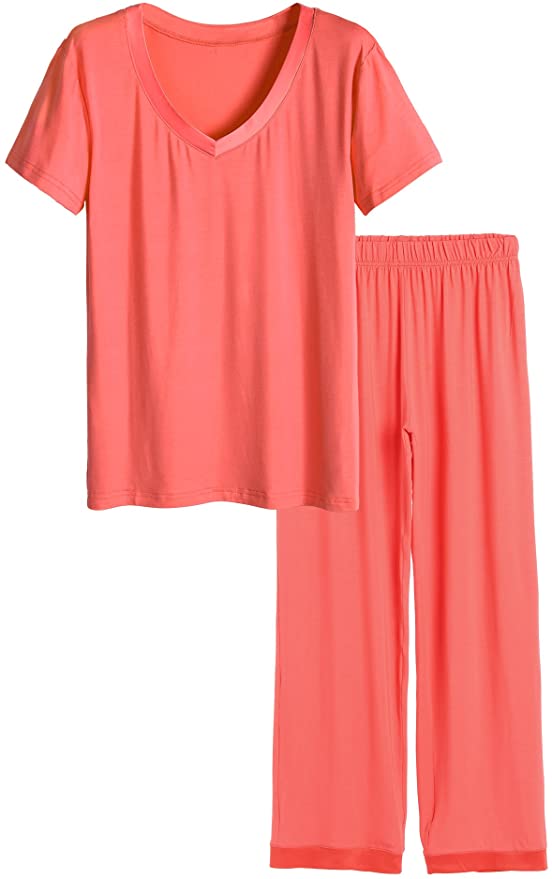 | Pajamas: As mentioned, you will most likely be sharing a room so don’t forget to pack your pajamas! Here’s a comfy choice from Amazon. |
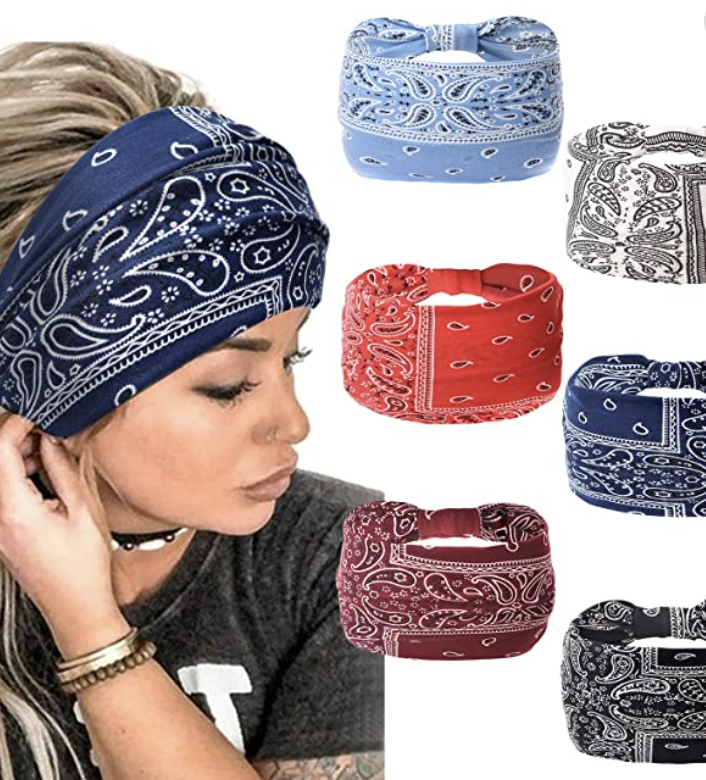 | Hair ties and / or bandana and / or hair band: I have very thin long hair so a wide hair band helps me keep the hair in check in the wind and dust of an open top vehicle and it can even be an alternative to a hat if you are ok with wearing sunscreen. These ones are versatile. |
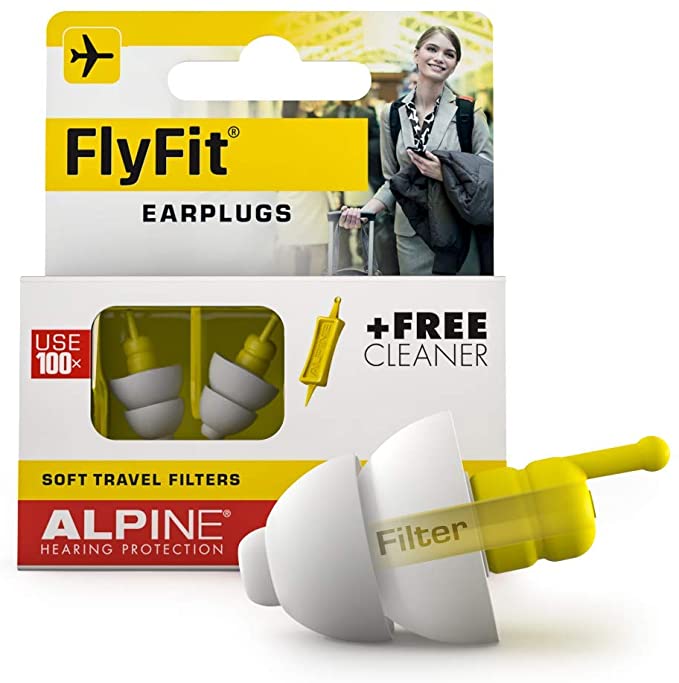 | Ear plugs: If you are a light sleeper, a pair of ear plugs can help you sleep better and block out the sounds of the bush. We will be sleeping in lodges with thin canvas walls and surrounded by wildlife. Many animals are nocturnal and it is not unusual to hear their call at night. Check out these ones from Amazon. |
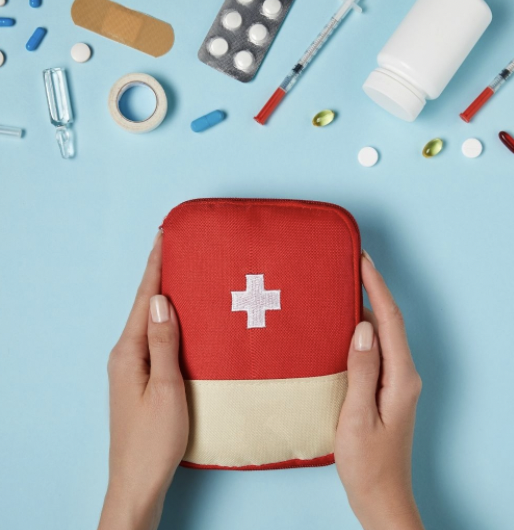 | First aid kit and medication: Available medications, brands and products in Tanzania may not be the same back home so it’s always best to bring everything you are used to and of course, all prescription medication or vitamins you take. I also recommend packing a basic first aid kit with items such as painkillers, plasters and antiseptic ointment, motion sickness tablets, antihistamines, electrolyte powder in case of diarreah plus any other tummy ache related tablets or medicines your doctor may suggest (antacid, diarreah tablets, etc.). Travelers diarreah is the most common ailment when traveling especially in countries very different from your own. See our First Aid Kit list here. |
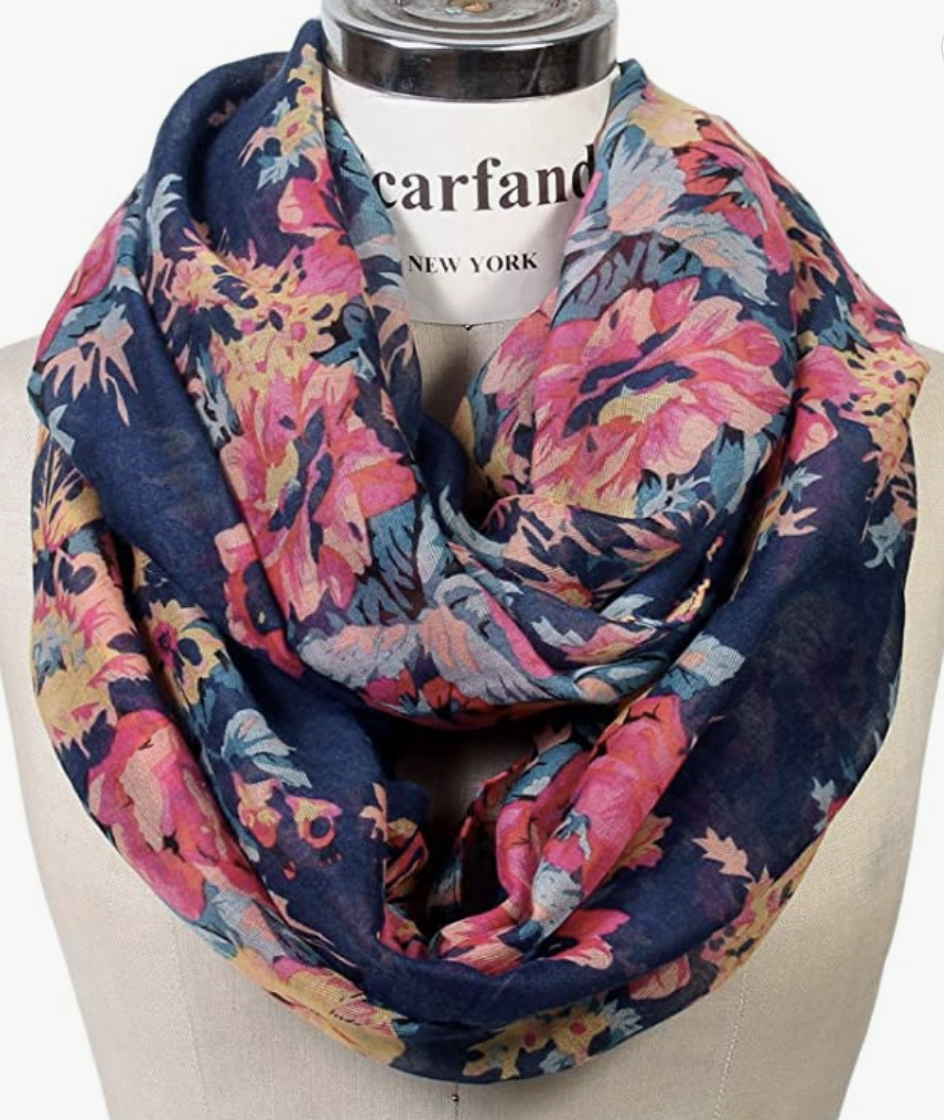 | Scarf: As mentioned, I like to have an infinity scarf handy. It is useful for chilly mornings, to protect from the sun rays in the heat of the day, and to cover your head in case we enter a mosque in Zanzibar. Scarves are also useful if we drive through a dusty patch while the car’s top is open, so you can cover your face. I like infinity scarves so they don’t fly away with the wind and this one is very pretty and colorful which is good in the neutral bush. |
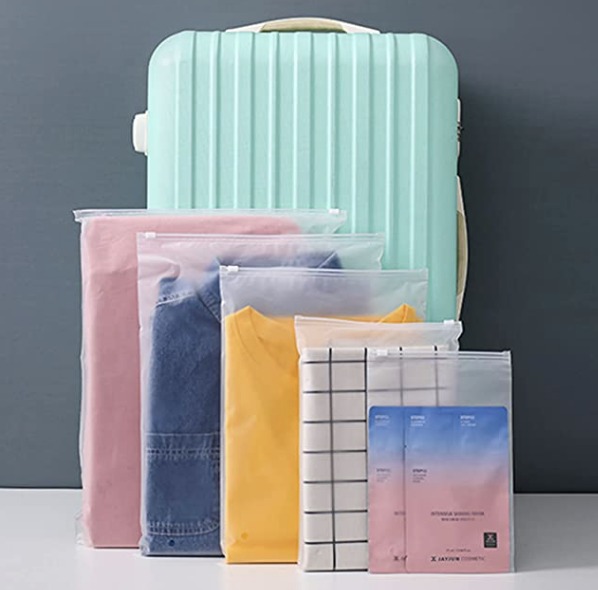 | Large ziplock bags: These can be useful to put dirty shoes in or wet swimming suits. Remember plastic bags are not allowed into Tanzania and only reusable ziplock bags are. |
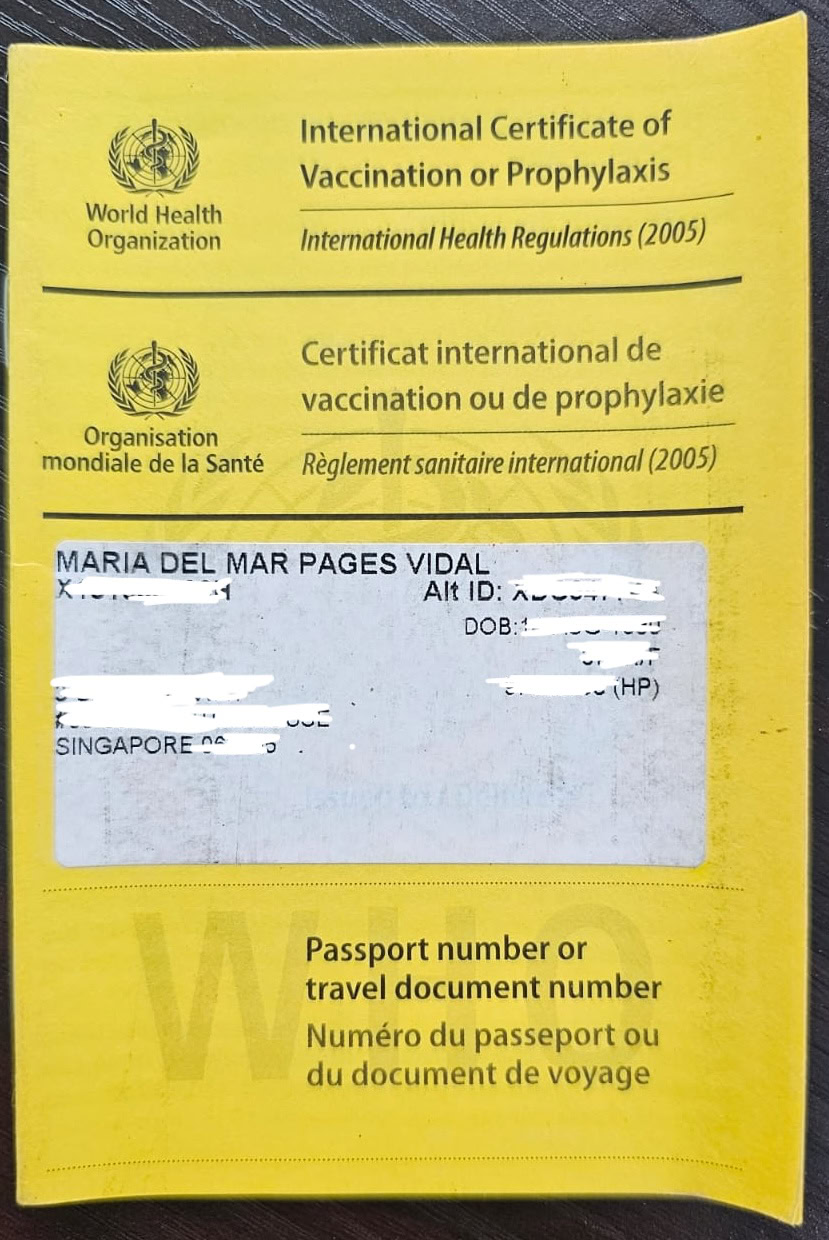 | Vaccination certificates: If you are coming from an endemic Yellow Fever area or transition through one for more than 12h, you should make sure you have taken your Yellow Fever shot. This includes coming in from Ethiopia or Kenya or transiting through either for more than 12h. |
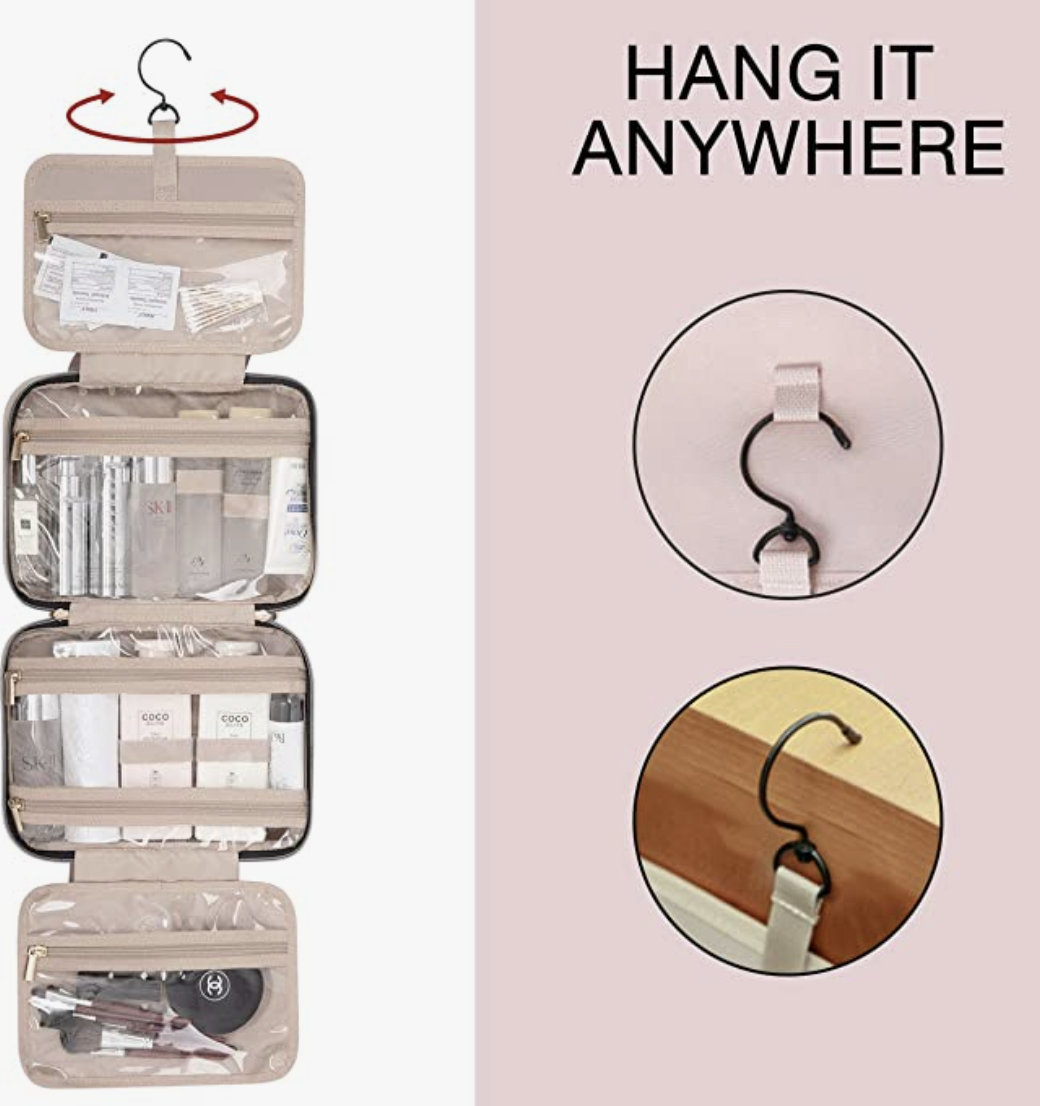 | A foldable toiletry bag: I always travel with a foldable toiletry bag which I can hang anywhere. On safari, these bags make sense because there may not be a lot of space around the sink, we will be moving around a lot, so you save on packing and unpacking, and will share with another guest. They also help you keep everything easy to find and tidy. This one is very cute. |
Camera equipment for Tanzania
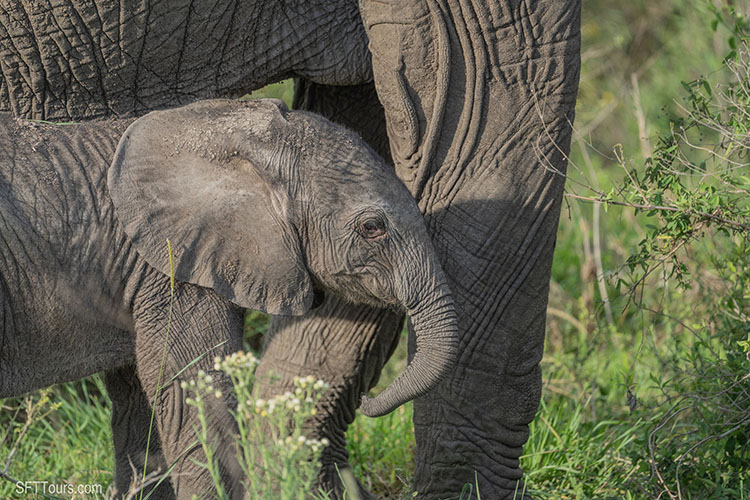
Most of us will go to Tanzania and want to take memorable photos of our safari experience like the one above.
While you can take perfectly good photos with a point and shoot camera or even your phone, most of the wildlife encounters will involve wildlife being a few meters away and the only way to get a clear picture that captures movement and action is by using a zoom lens.
We do not recommend purchasing specialised equipment to take photos on the trip unless you have the time to learn how to use it in advance as a complicated camera you can’t properly use is worse than a point and shoot.
If you’ve ever considered purchasing a good camera, then a safari is the perfect excuse to do so, BUT (and this is a big but!), do practice extensively at home before the trip with moving objects, animals, etc.
Some wildlife photography tips before we look into specific items to pack:
- Don’t underestimate your phone camera. At times, animals could be really near the vehicle and by the time you change your telephoto lens and get the right one for a close up, the animal has passed. Phone cameras can be a great supplement for selfies and close up shots when wildlife approaches the vehicle, which does happen. Plus phone cameras are good to take photos around the lodge or group shots with other travelers or even short videos for social media.
- Become intimate friends with your camera. We’ve said it, but I will say it again, familiarise with your camera. This includes what settings to use and what zoom lens is best, when *that* scene unfolds in front of your eyes you won’t have time to fiddle around with the settings, you’ll get one chance, so be ready.
- Back up your photos: If you are an avid photographer then we strongly recommend that you back up your images daily to your laptop. While there may be internet access in the lodge this will be provided by the mobile network and backing up hundreds of photos to the cloud won’t be possible. Memory cards can often be faulty with the constant shaking and the dust so if images are really important to you we recommend you make a backup. Alternatively, bring several smaller memory cards so you file away the one you used each day and keep it safe until you get home. Should one go faulty, you would only lose a day or two of images as opposed to them all.
Below are a few of the cameras we have used / use and some of the accessories we recommend which are arguably, more important than the camera itself.
Camera for safari
Below are the two cameras I use on safari.
- Mirrorless Panasonic Lumix GH7: This kit is one of the cameras I have and use on safari. What I love about this model is that it is lighter than a full frame DSLR camera which can easily weigh double, and it works with Lumix lenses which are also much more affordable and compact.
I have a wide angle 7mm-14mm, a 25mm-150mm and a 100mm-300mm that is perfect for safari; long enough to capture wildlife from up close but compact and more importantly, light enough that I can fit it in a small camera bag and comfortably carry it around. Plus Lumix is resistant, and easy to use. It connects to my phone via bluetooth so I can see photos and operate the camera remotely.
- Canon EOS Rebel T7: Canon DSLR cameras are widely known to be the top of the range but they are usually heavier than mirrorless cameras, both in terms of the camera body and the lenses. However, they produce incredible photography and because they are DSLR and not mirrorless, the quality of the image is better and they can photograph the night sky without noise. This bundle is perfect for safari photography.
Lens for safari
More than the camera, to take good safari photos you will need a long lens.
- Lenses: A telephoto lens of at least 300mm is a must if you want to get close up images of wildlife.
We would also recommend a second lens that is 25mm to 70mm for images that provide context and focus on the scene, and a wide angle lens for landscapes or in my case, for lodge and hotel interiors (or you can use your phone).
Other camera equipment to pack for your safari
Besides the camera and lens, there are other super important items you need to pack for your Tanzania safari:
 | Extra batteries. No matter which camera you choose to bring, having extra batteries is essential. Even if you don’t take photos all the time, you may have your camera turned on a lot and you don’t want to run out of battery. |
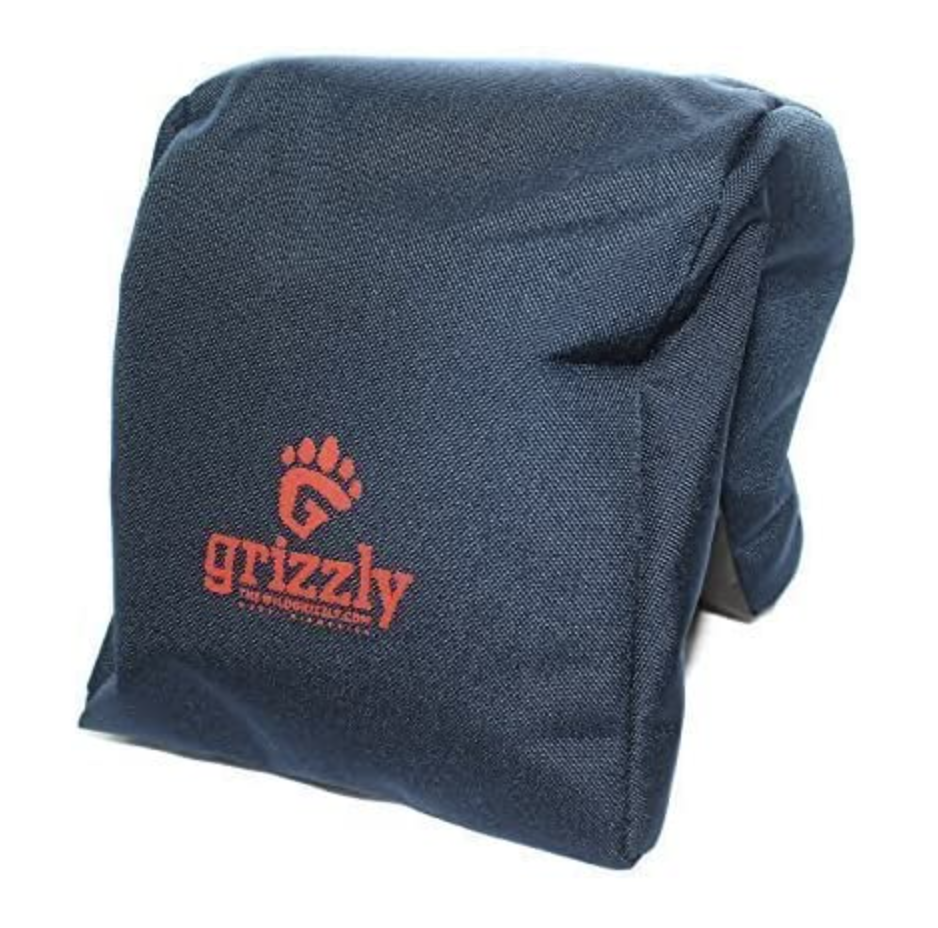 | Stabilising bean bags: When a specific animal or scene is spotted, your driver will stop the vehicle and let you all enjoy it. That means that most shots will be taken with the car engine stopped. However, with a long zoom lens, you will need all the stability you can get and since you can’t use a tripod, a small bean bag you can rest on the car’s rooftop and put your camera on is extremely useful. If you can’t find a bean bag where you live, a simple solution is to bring a small zip bag you can then fill with beans or rice in Tanzania. Check this one specifically made for wildlife photography. |
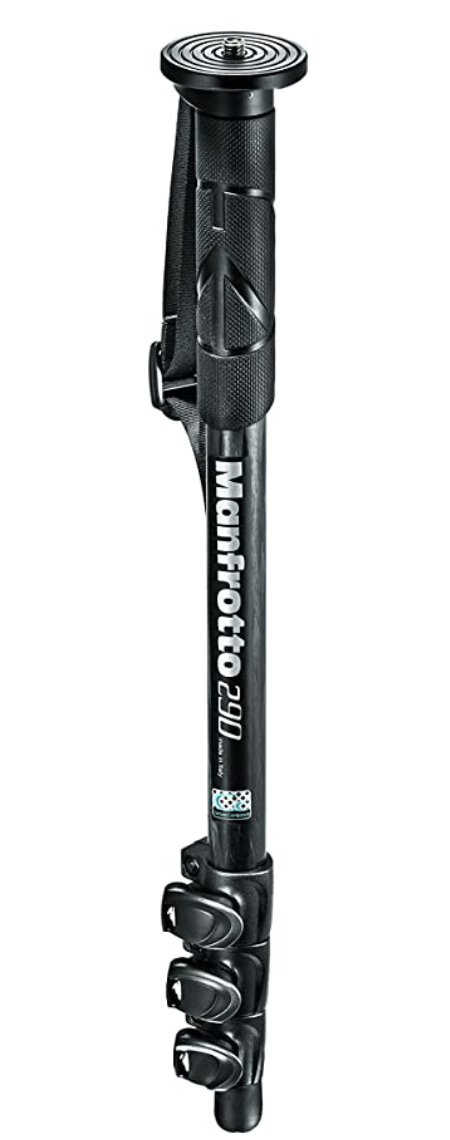 | Monopod: I just mentioned bean bags are useful and tripod are not. There won’t be enough space inside the vehicle to stabilise a tripod and using one would also severely restrict movement and not let you turn around fast enough when animals move (and they do). A good alternative to a tripod is a which allows you to rest the camera on a stable leg and take photos without using a bean bag and having to stabilise the camera over a roof. I like and use Manfroto’s pods and tripods, they are excellent and a brand reference. |
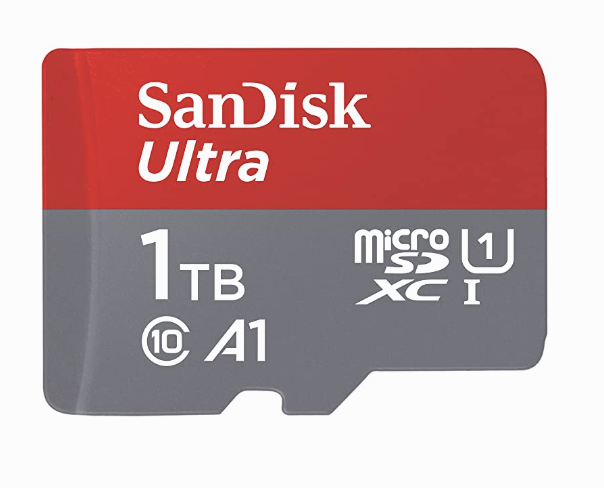 | Extra memory cards: The most frustrating experience on safari is to go take that special photo only to realise your memory card is full. Make sure to pack enough memory cards. Trust me, you will take more photos than you think and taking 500 a day is almost guaranteed. You don’t want to run out of space when that leopard decides to come down from the tree! I have been using SanDisk cards for years. Consider larger cards if you also want to take video. And make sure you are taking fast cards, otherwise you will miss the specific moment because your camera will be processing the previous photo instead of taking the new one! |
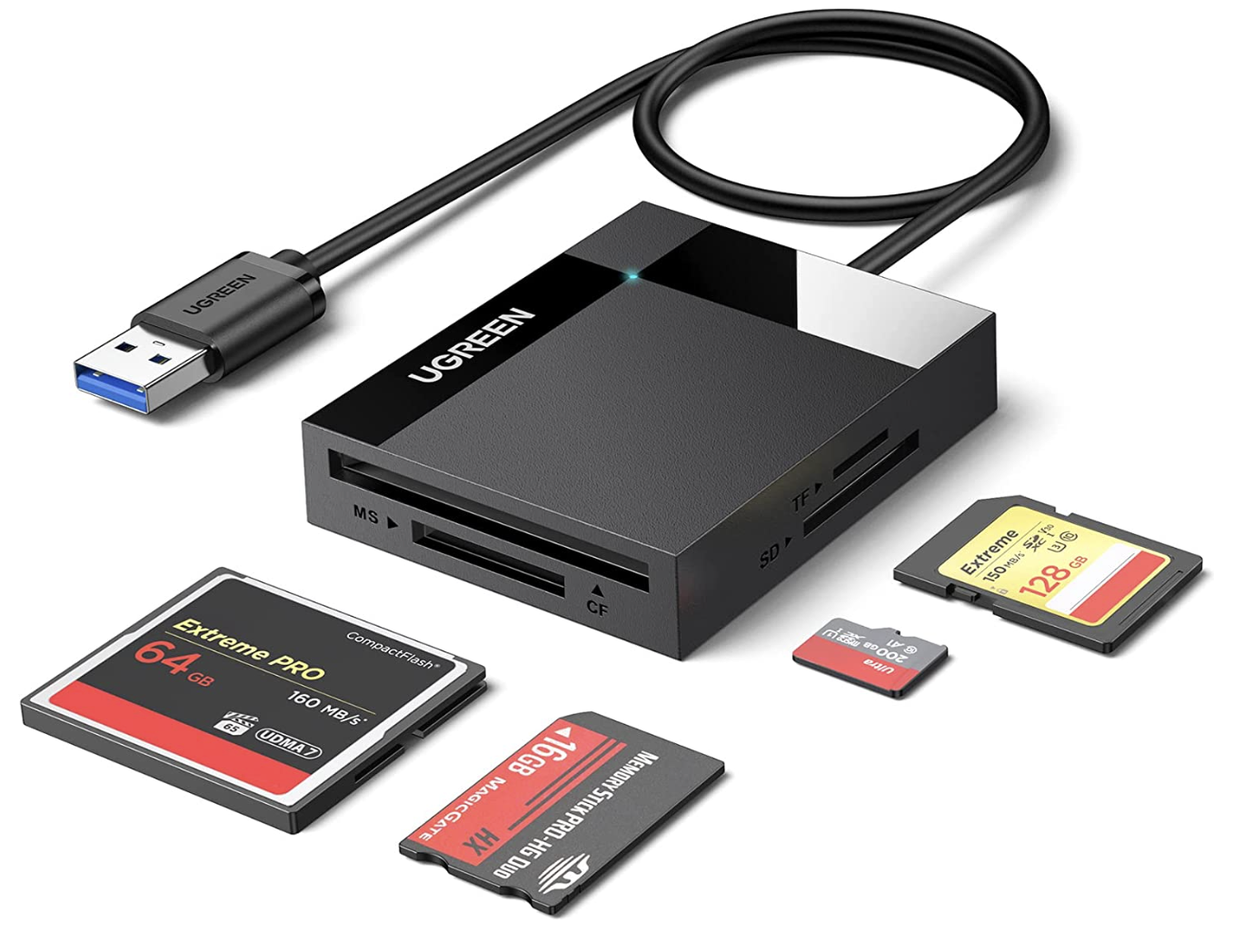 | Memory card reader: Unless your laptop has a memory card slot (and even if it does) a memory card reader is quick way to back up or see photos you’ve taken on your laptop during the downtime between game drives. We like the dual slot USB readers that allow us to plug in both SD and micro SD cards. Check this compact USB stick one out. |
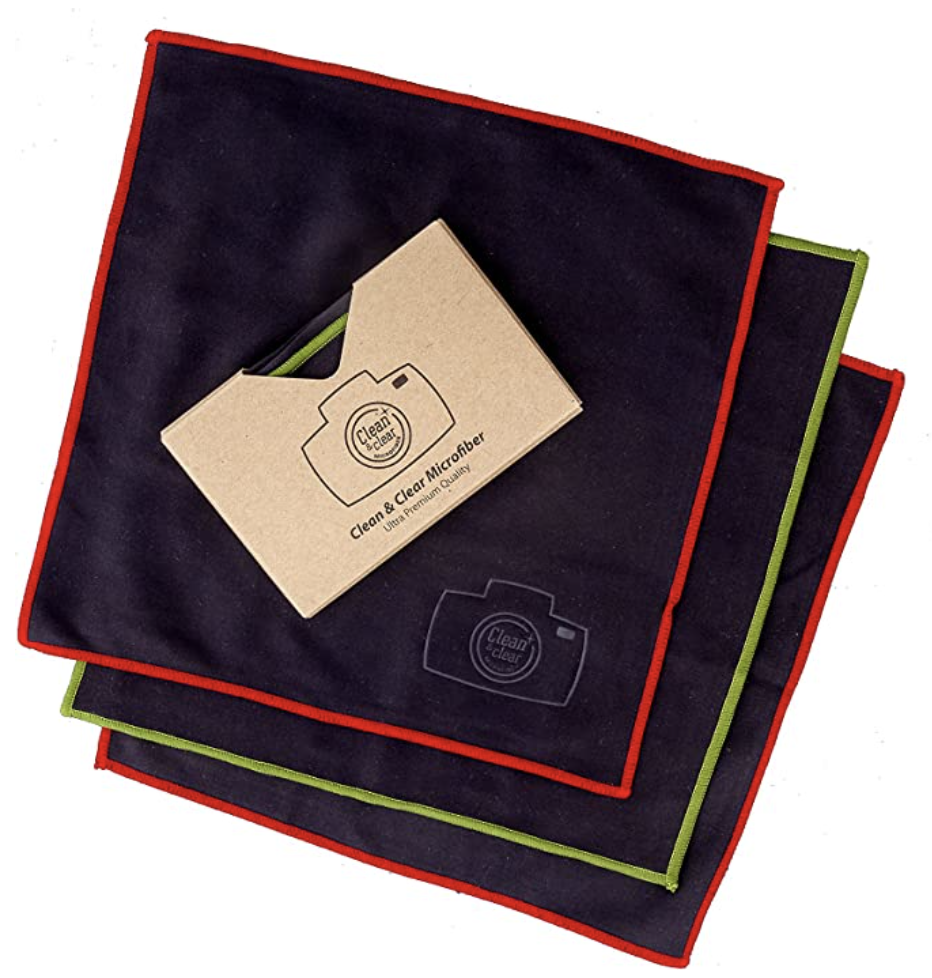 | A cloth to clean your lens: As mentioned, it’s dusty on safari so you’ll be wiping your camera all the time and I recommend that, when you are back at the lodge, you clean it properly with liquid and tissues, but this cloth is a great solution on the go. |
Things you should NOT pack for Tanzania
There are several items that may occupy a lot of space in your luggage and which you will find no use for in Tanzania.
- Hair dryer: Most of the lodges we will be staying at do not have powerful enough electricity to power a hair dryer, so we strongly advise you leave it home. Showers are usually taken during the day as early morning game drives are the norm so your hair will have enough time to dry with natural heat.
- Speakers to play music: Peace and quietness are appreciated when on safari and playing loud music will disturb wildlife and bother other guests, especially since we will be staying in canvas tents.
- Laptops: Unless you need to do some work, or you plan to back up your images every day into a hard disk (which is not a bad idea), we strongly recommend you leave your laptop at home. They could be damaged by the bumpy roads or the dust and will distract you from making the most of this incredible experience.
- Tripods: Unless you plan to photograph the starry night or the Milky Way (which by the way can be incredible) or take sunset shots around the lodge, tripods are not useful on safari as mentioned before, because they cannot be easily manoeuvred inside a safari vehicle. A good tripod will also be heavy and occupy a lot of luggage space and weight so it’s best to leave it home.
- Make up: This is obviously a personal choice but we do feel that you can probably leave the foundation and other thick make up behind and embrace a natural look. Lodges are casual affairs and the mosquito repellent + sunscreen combo makes it quite unpleasant to layer on top of your make up. You can also choose to bring mascara, a lipstick and some concealer and leave all the rest at home.

